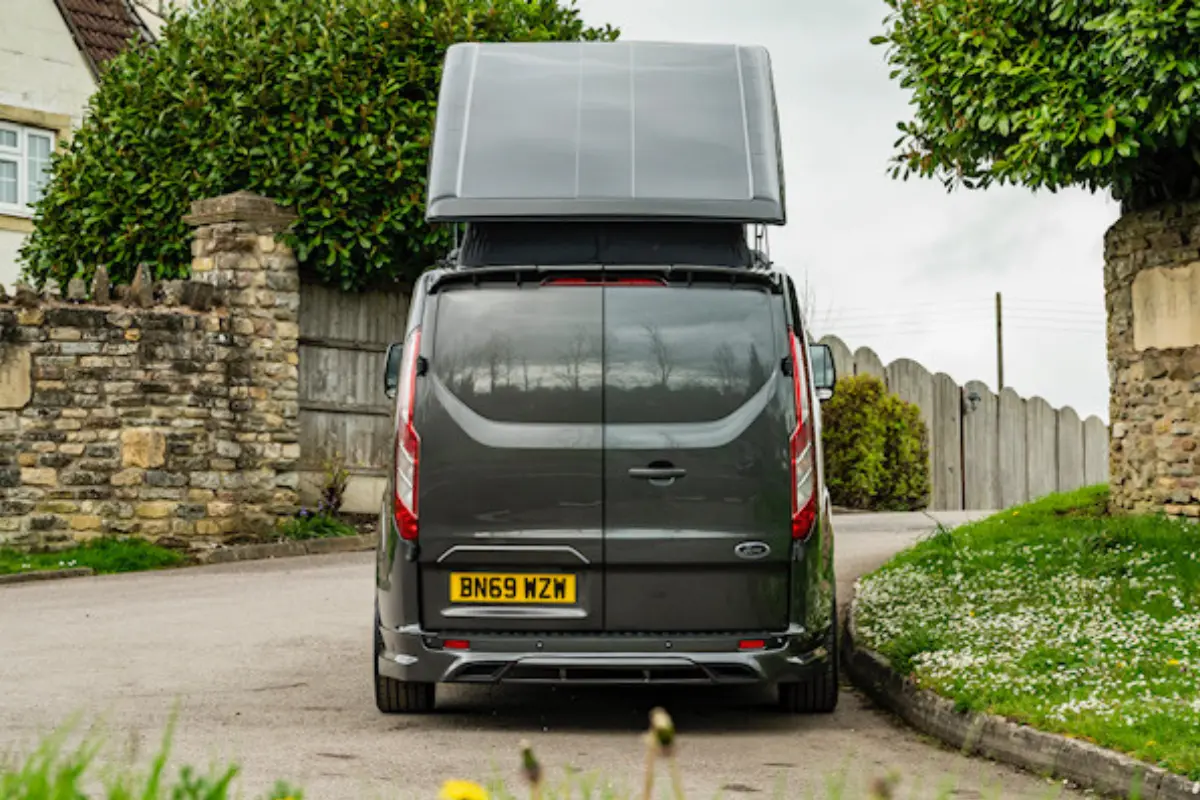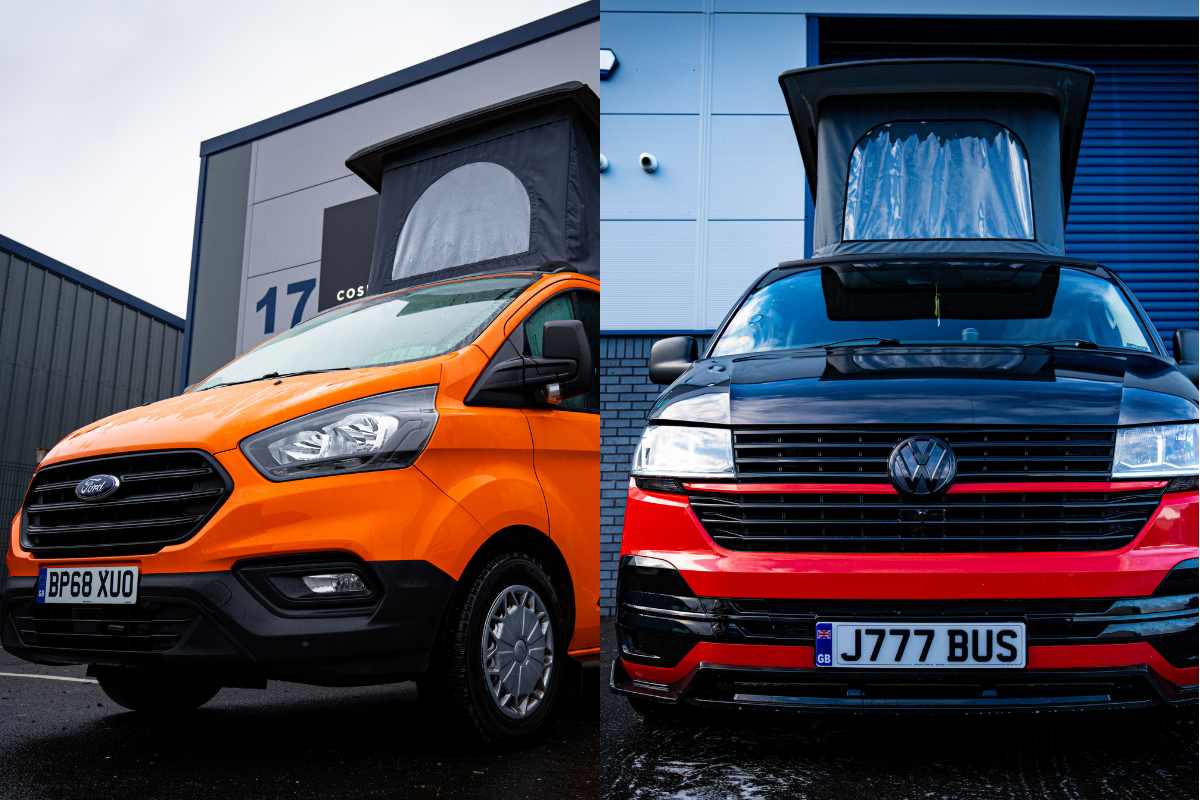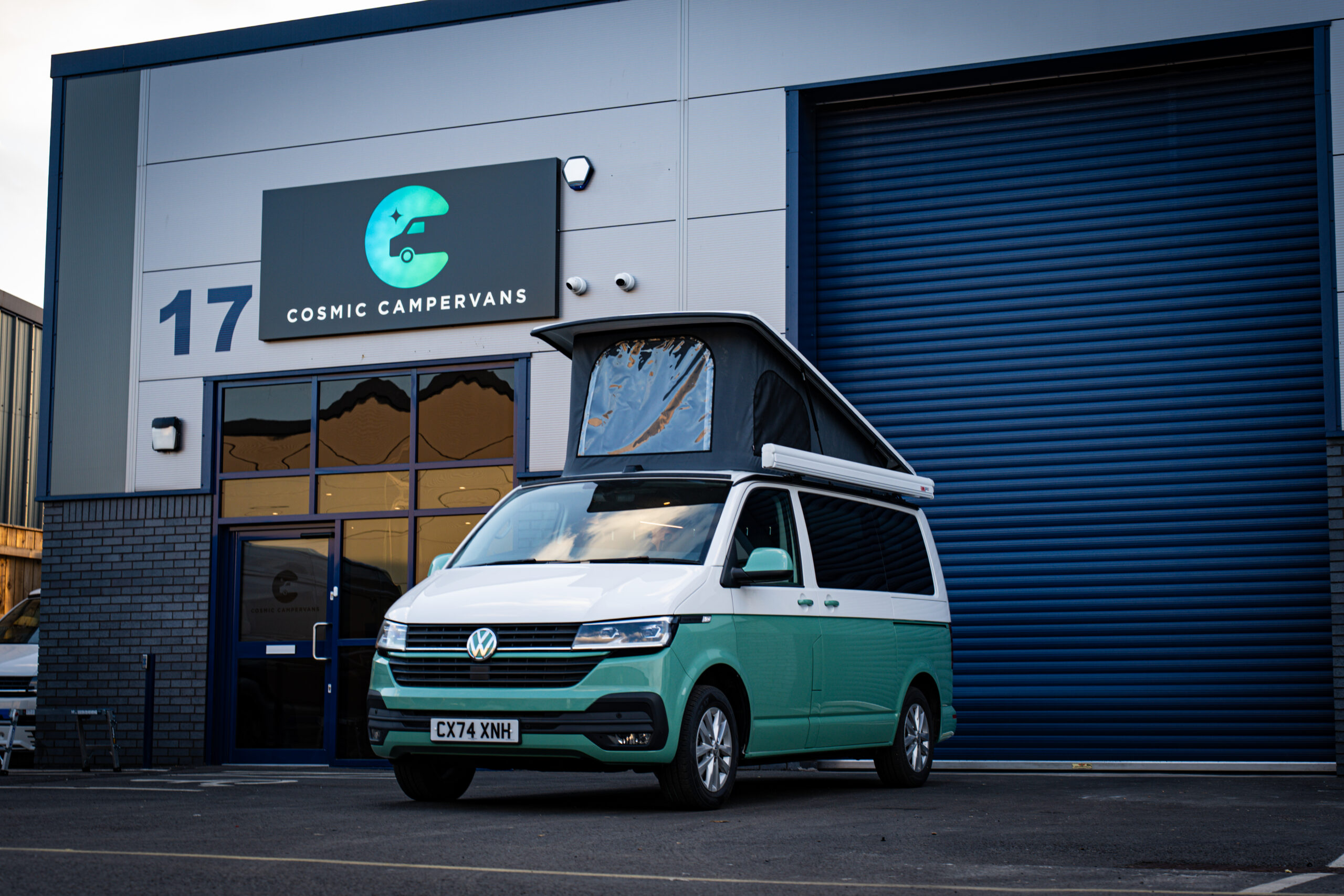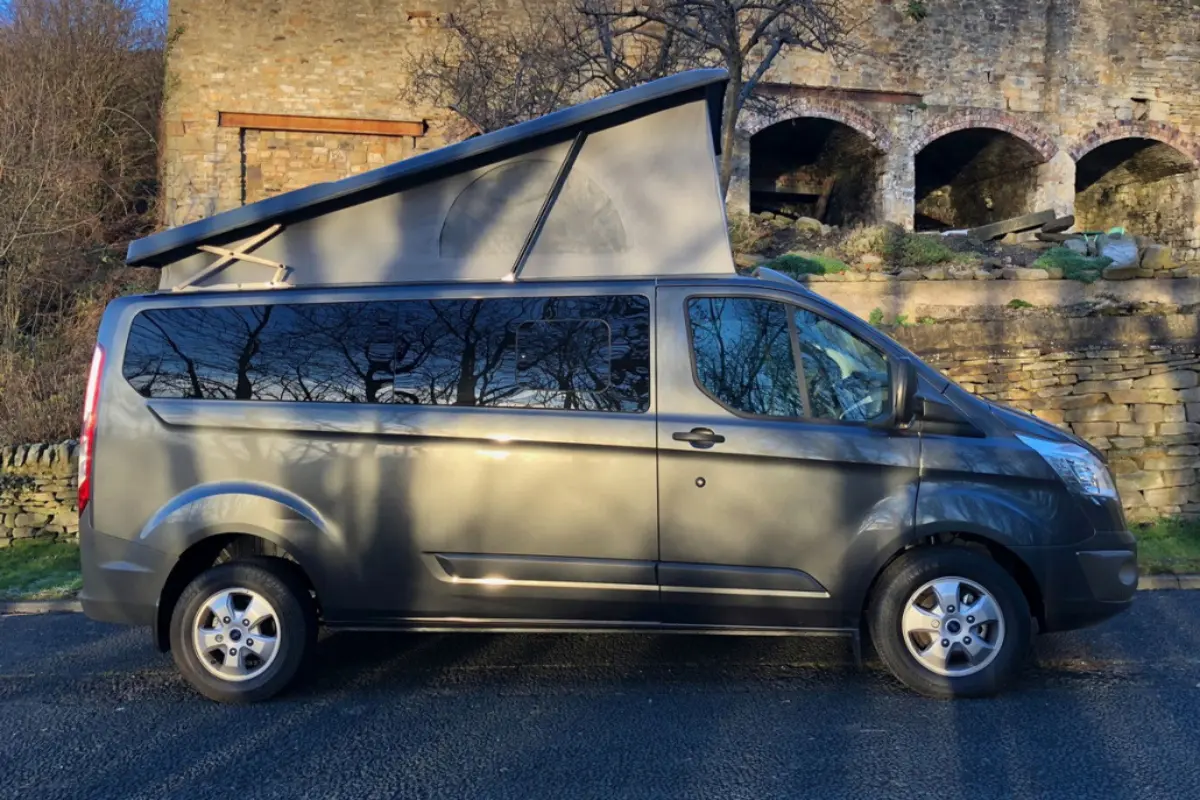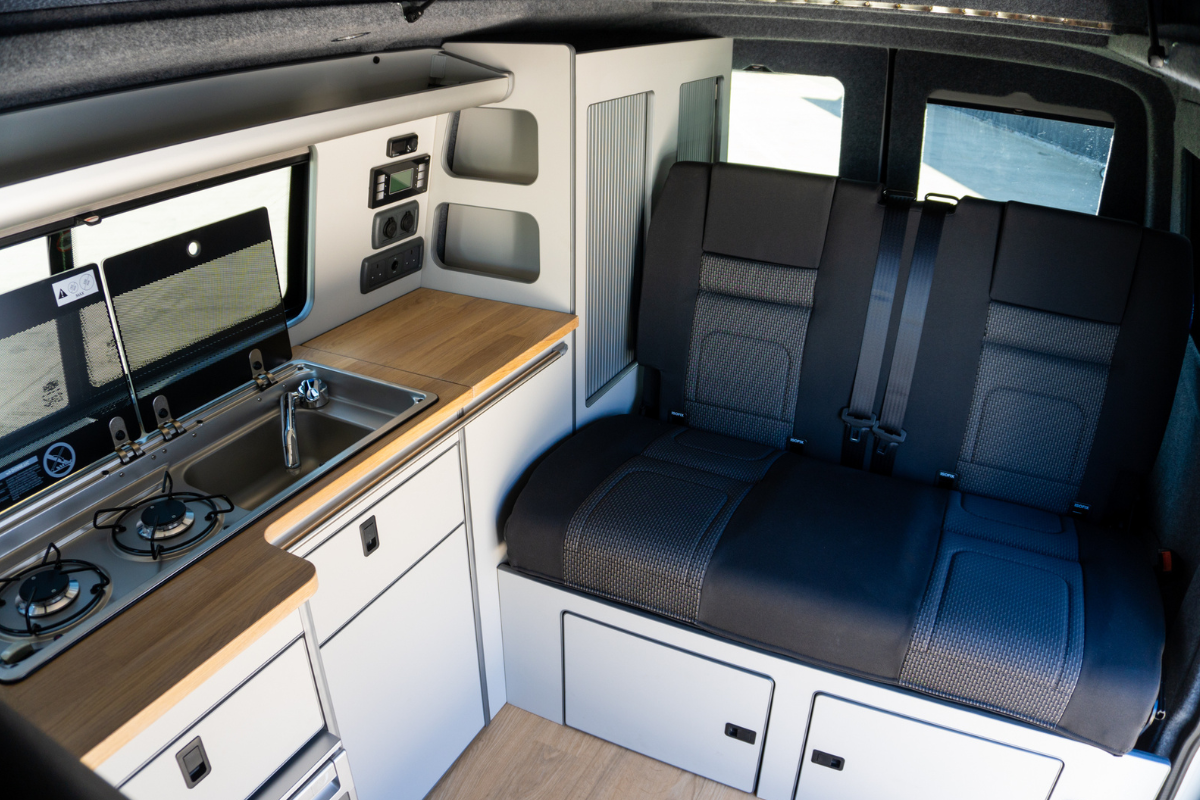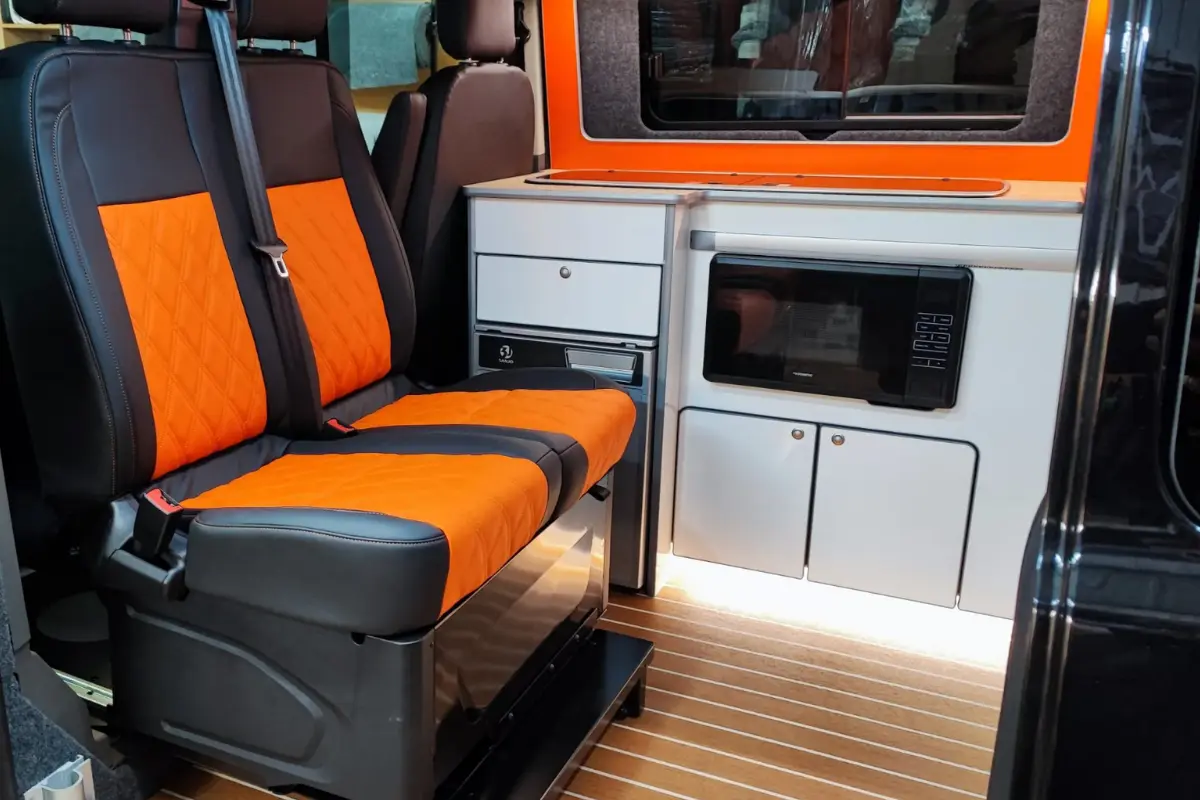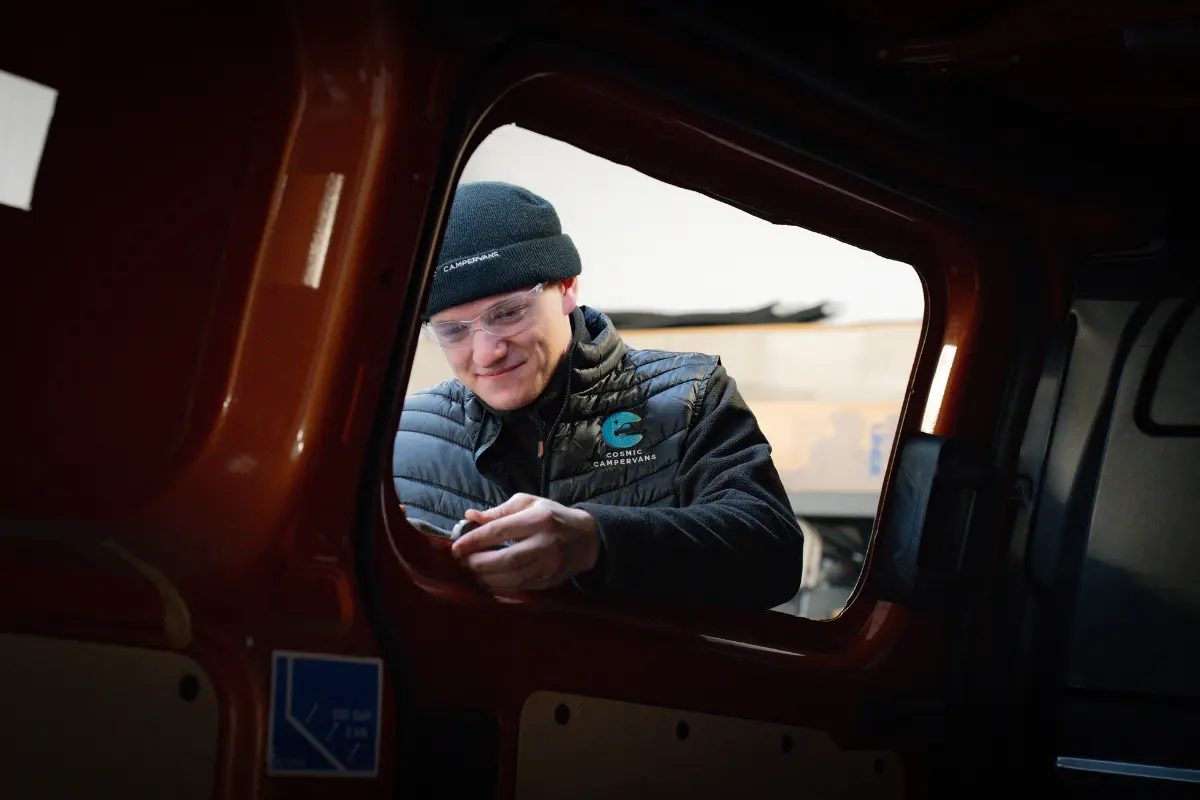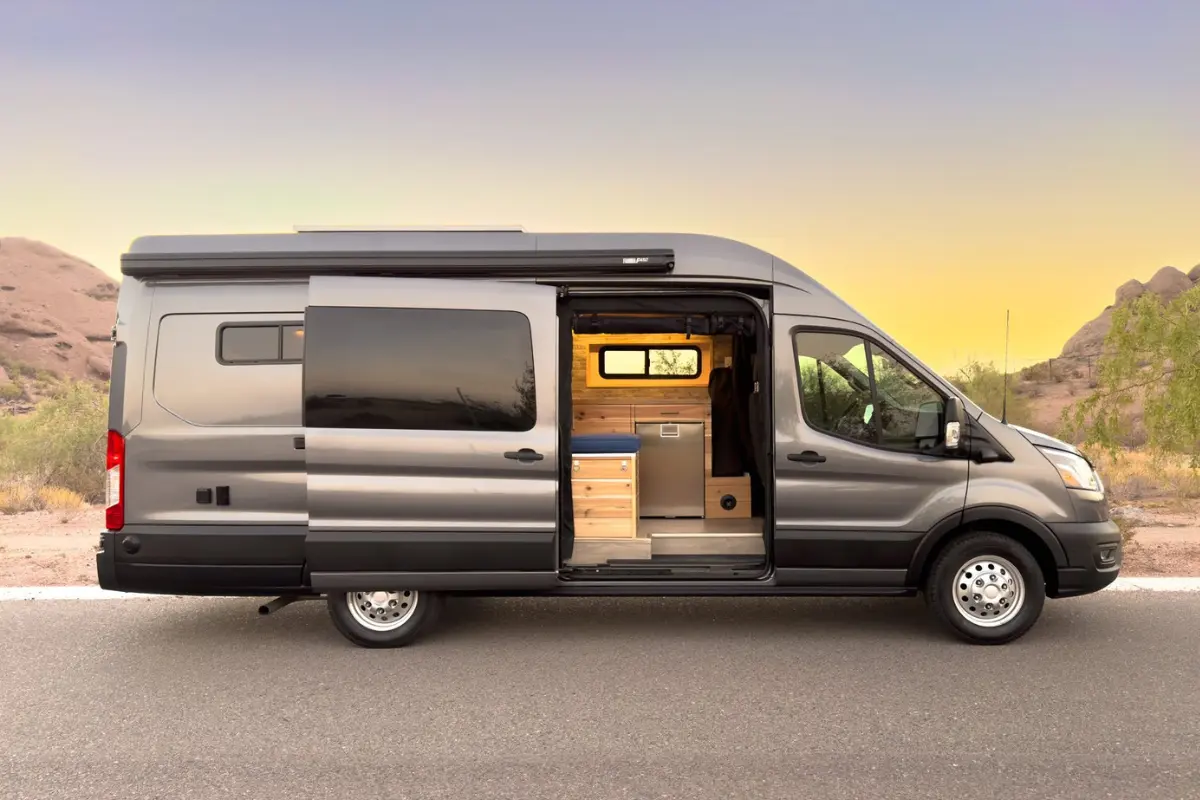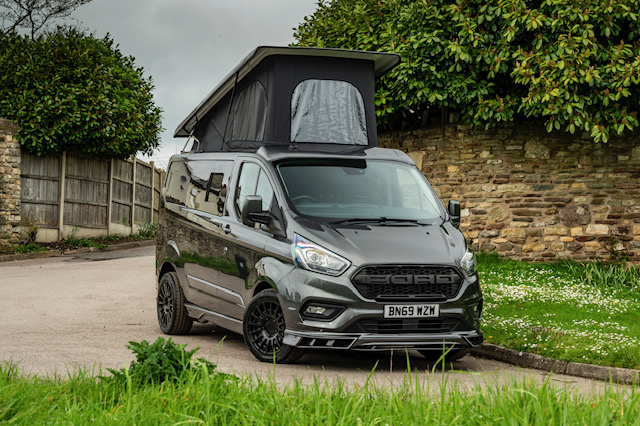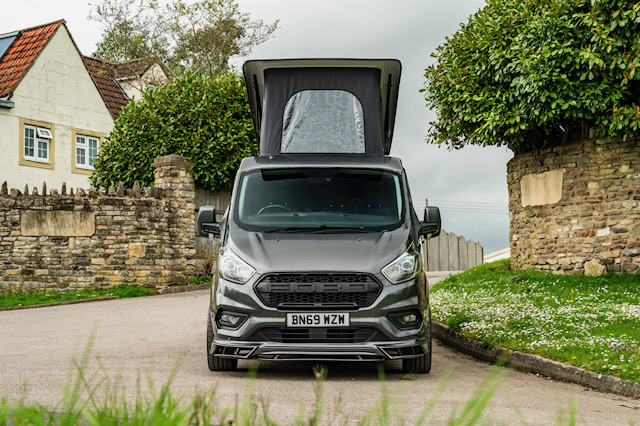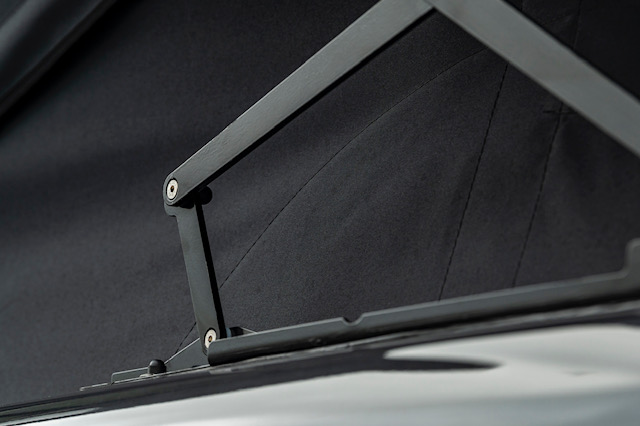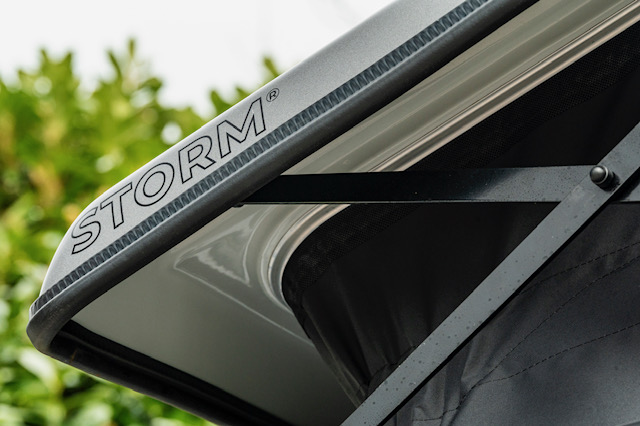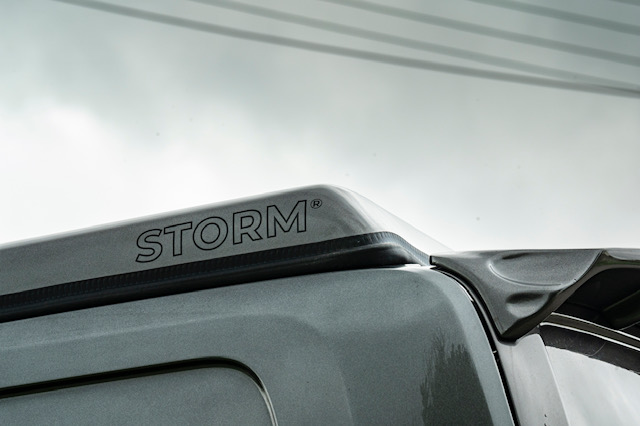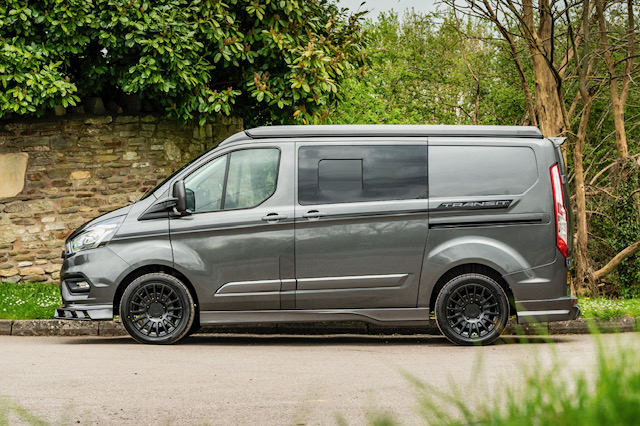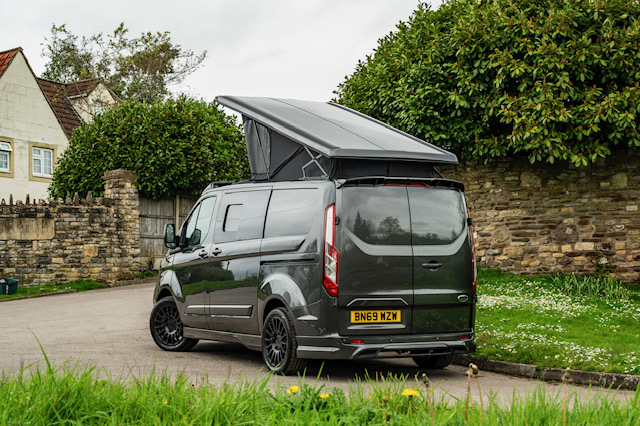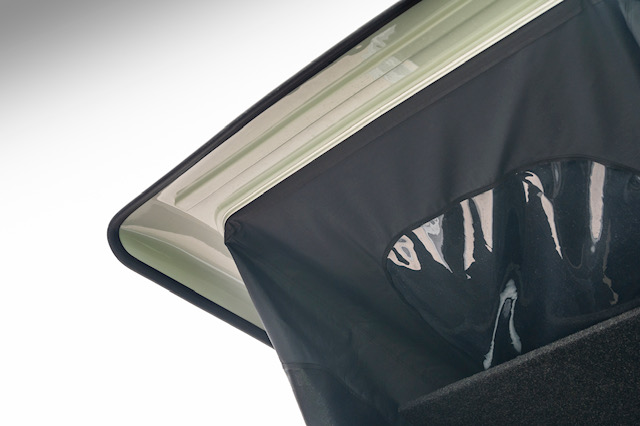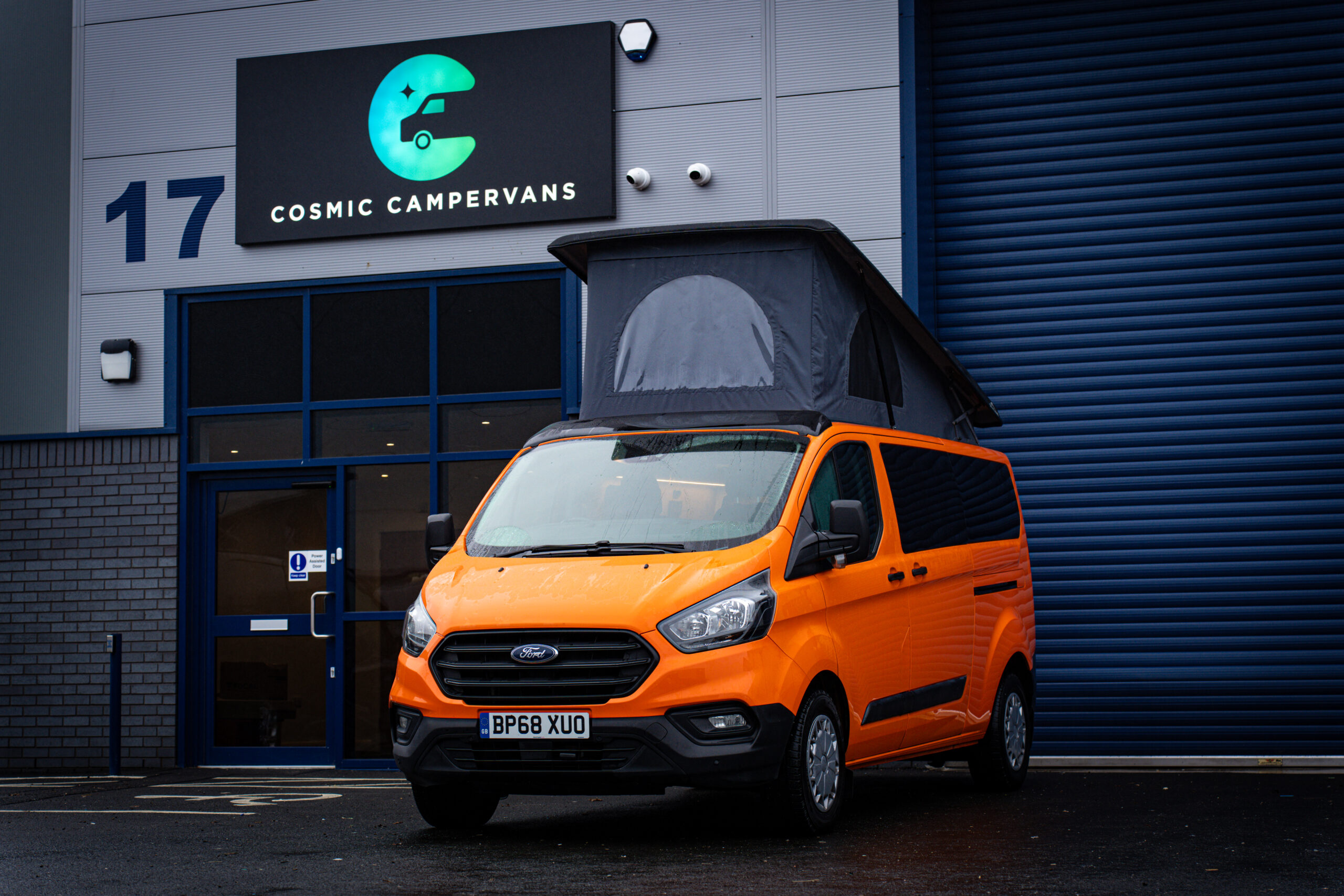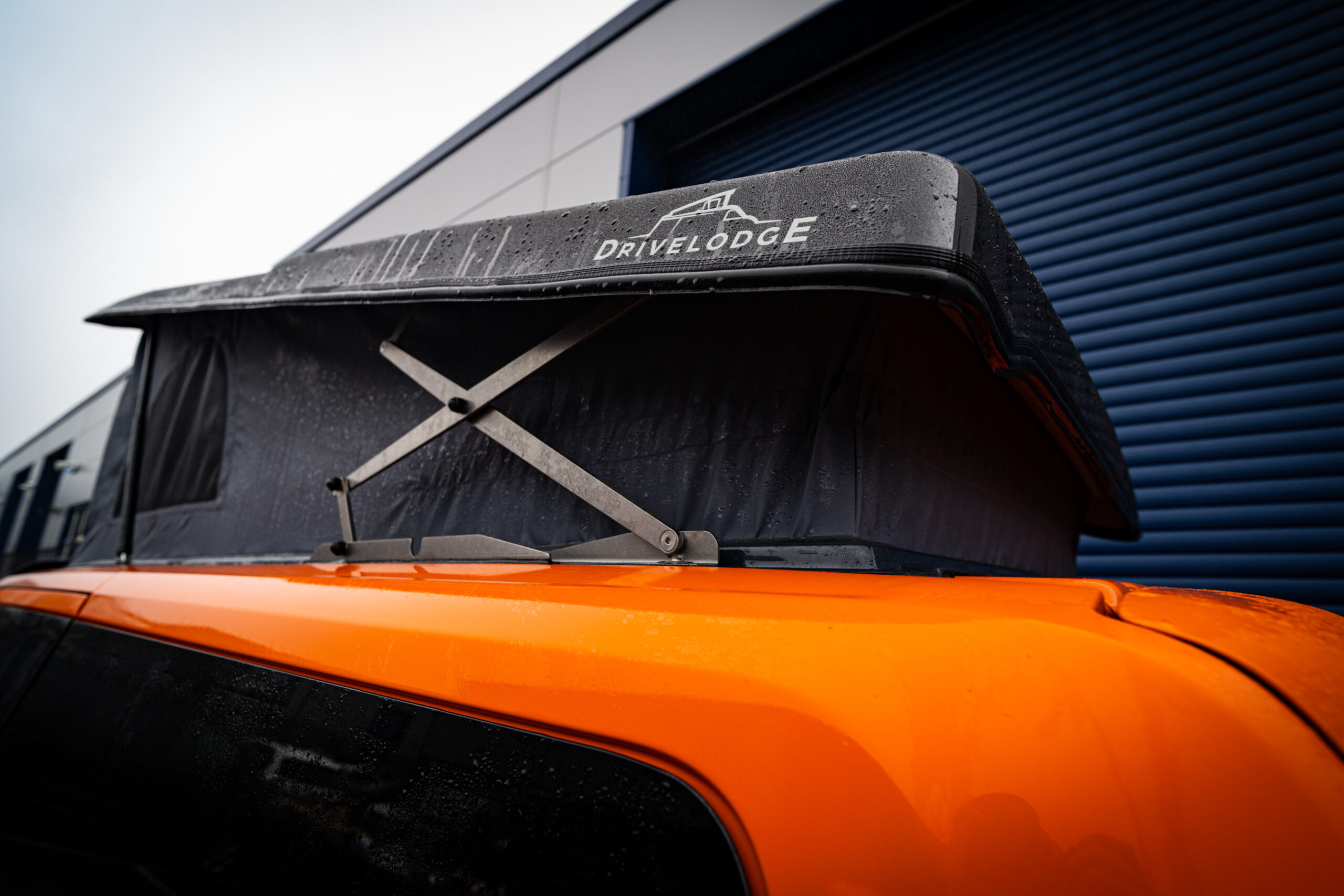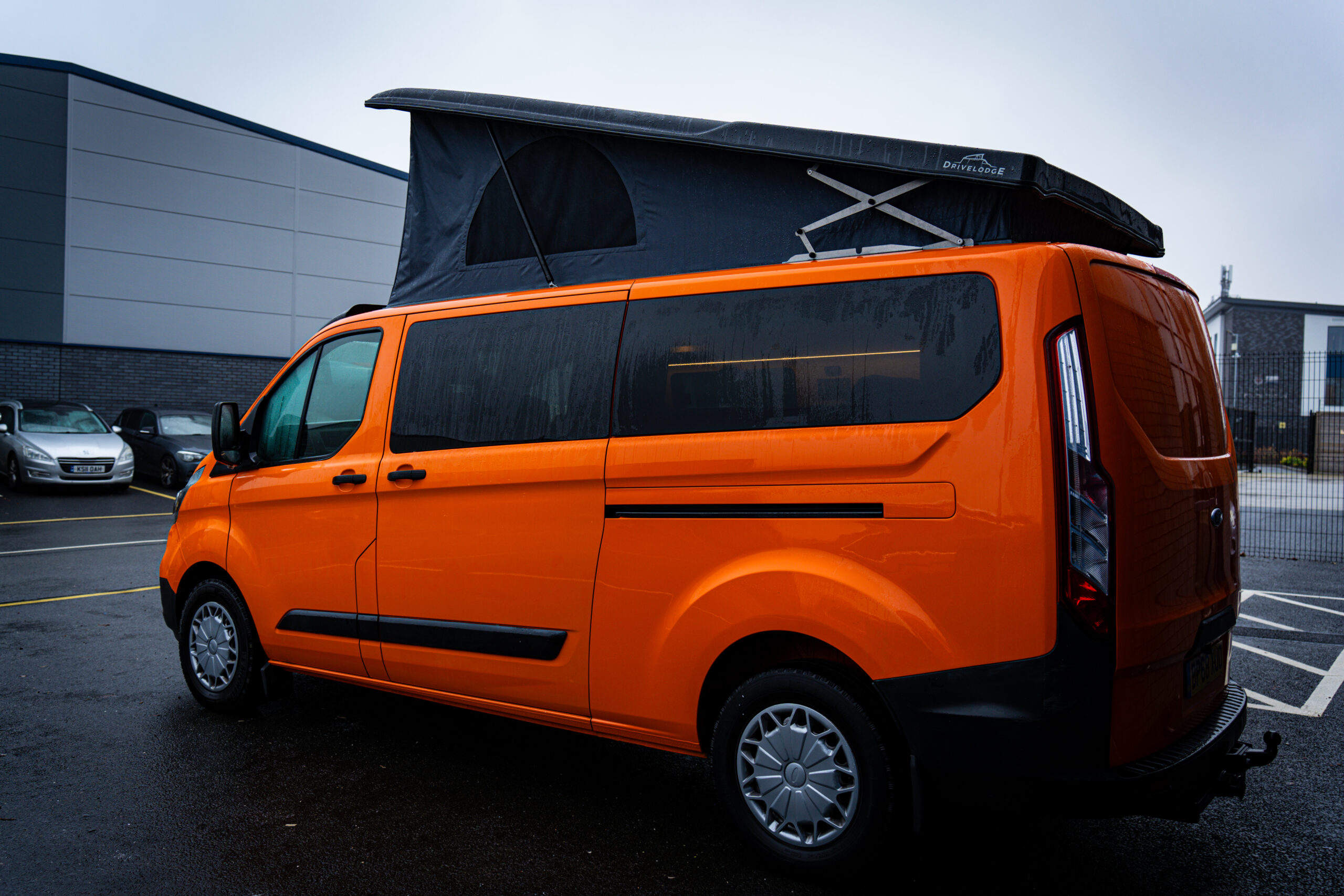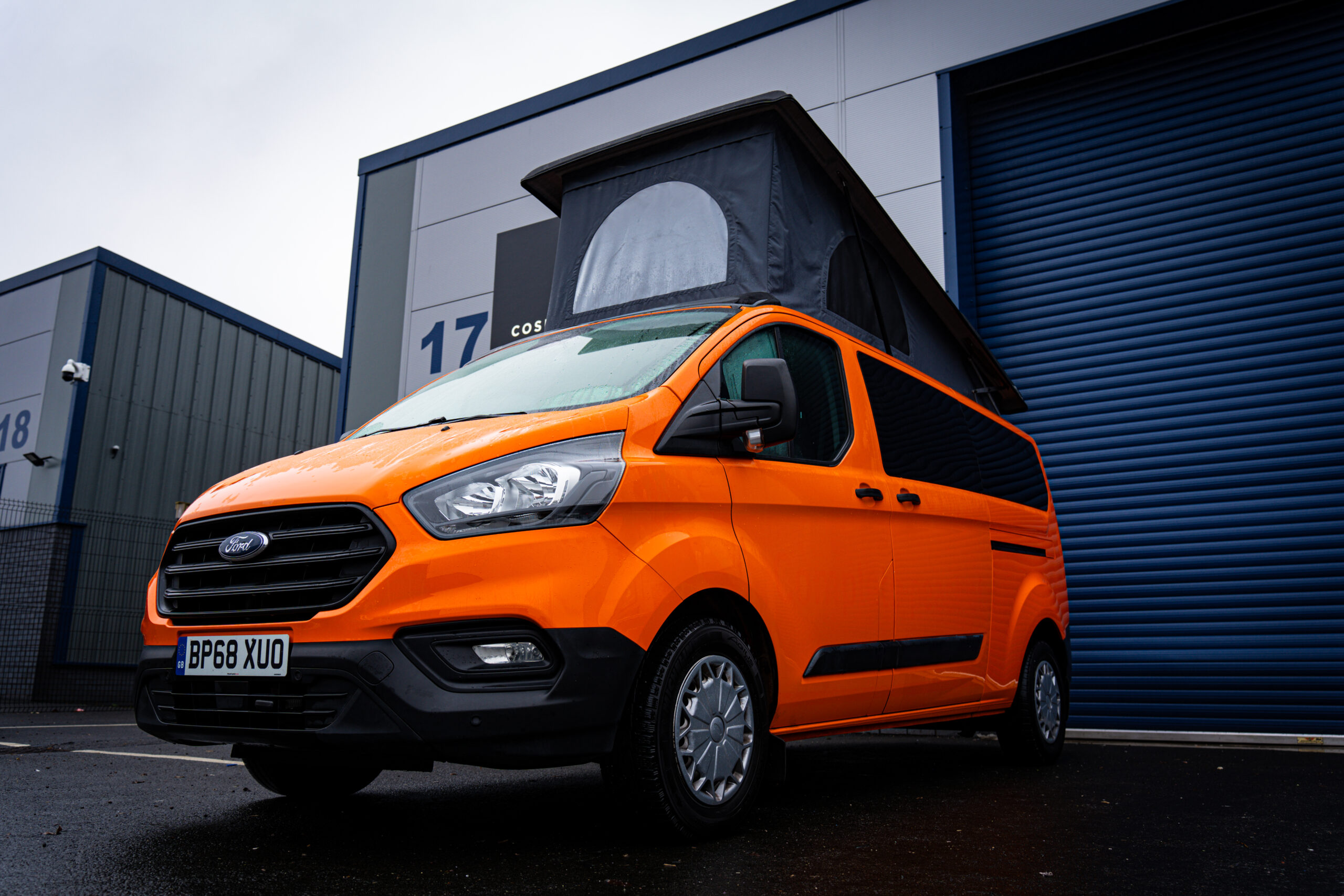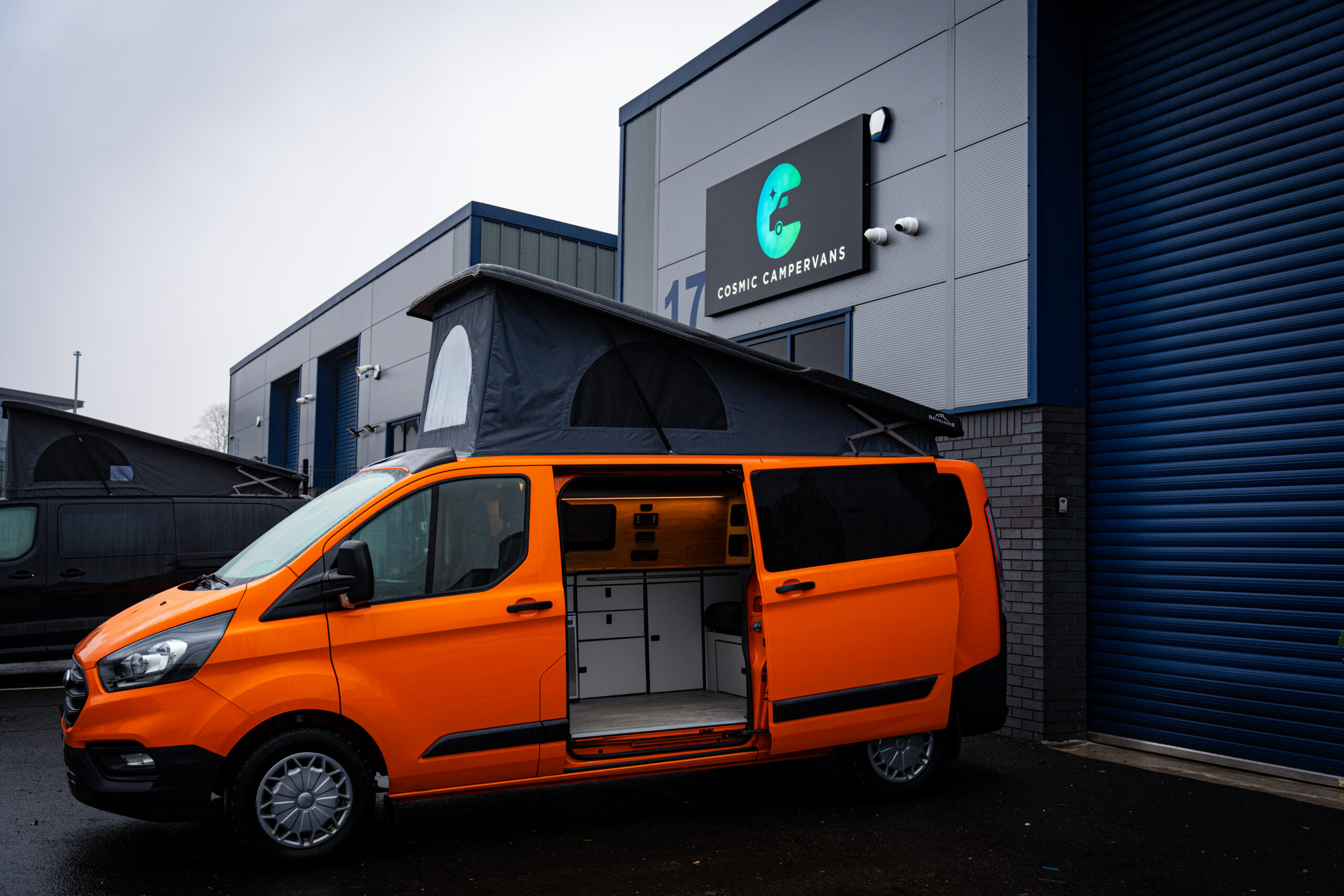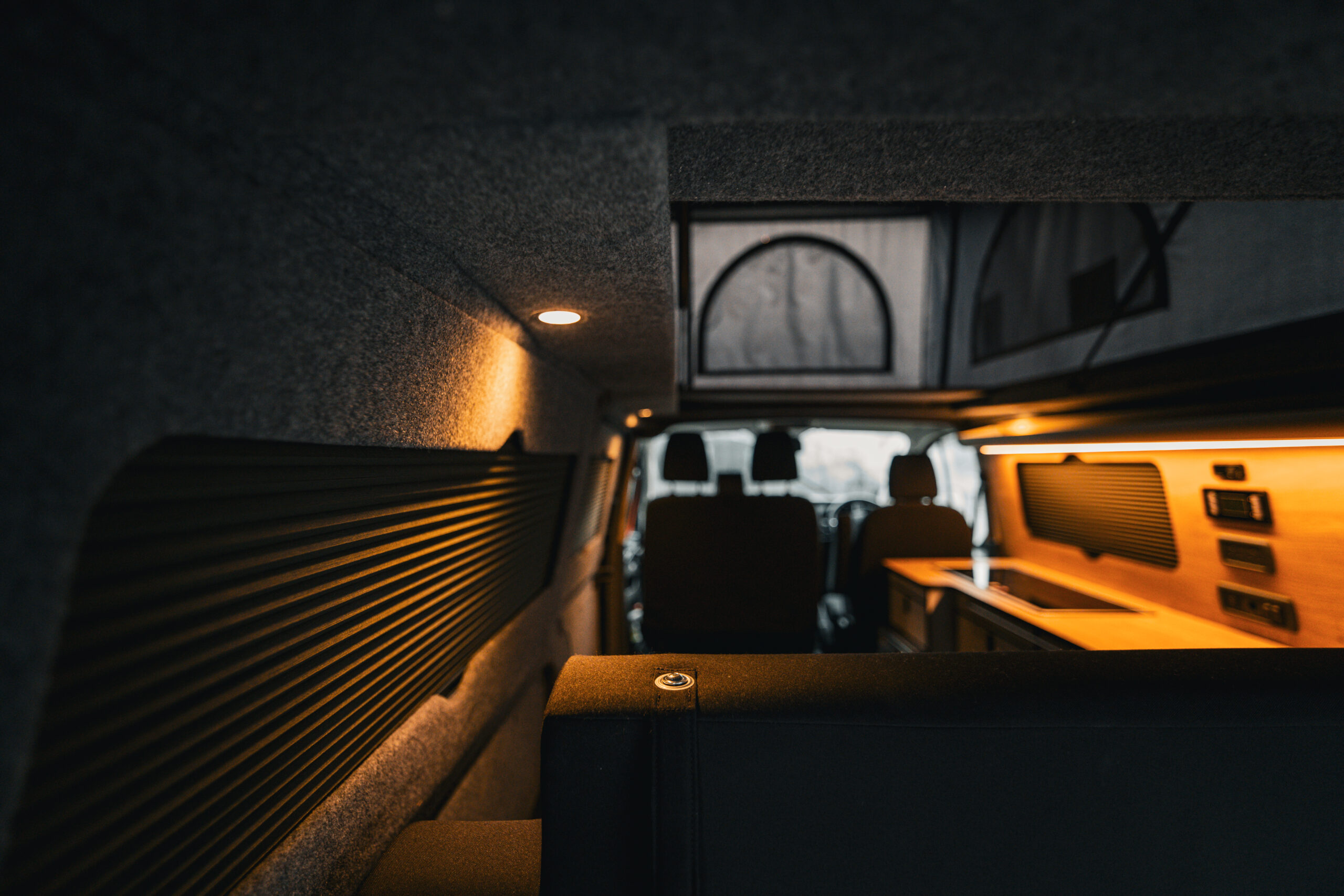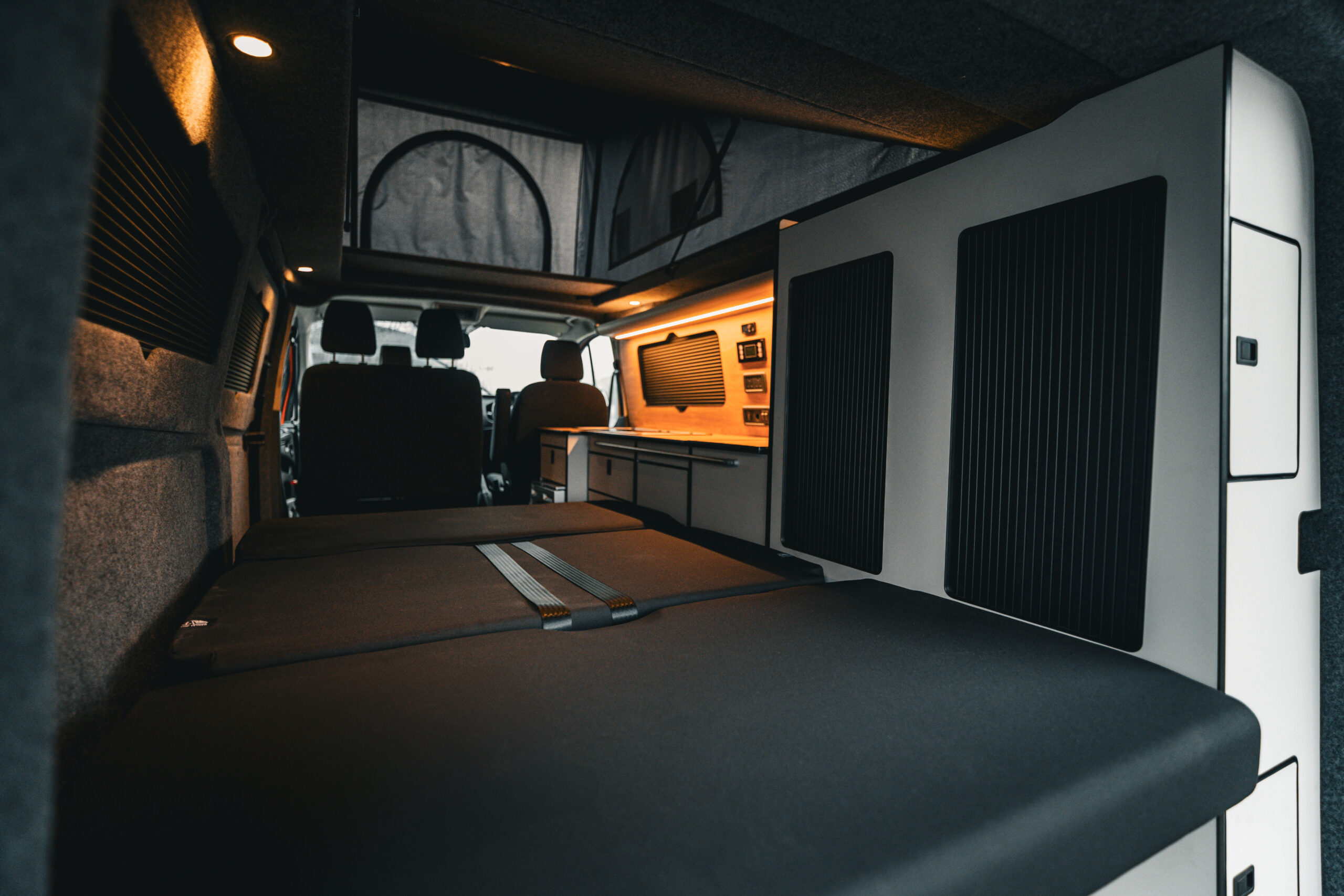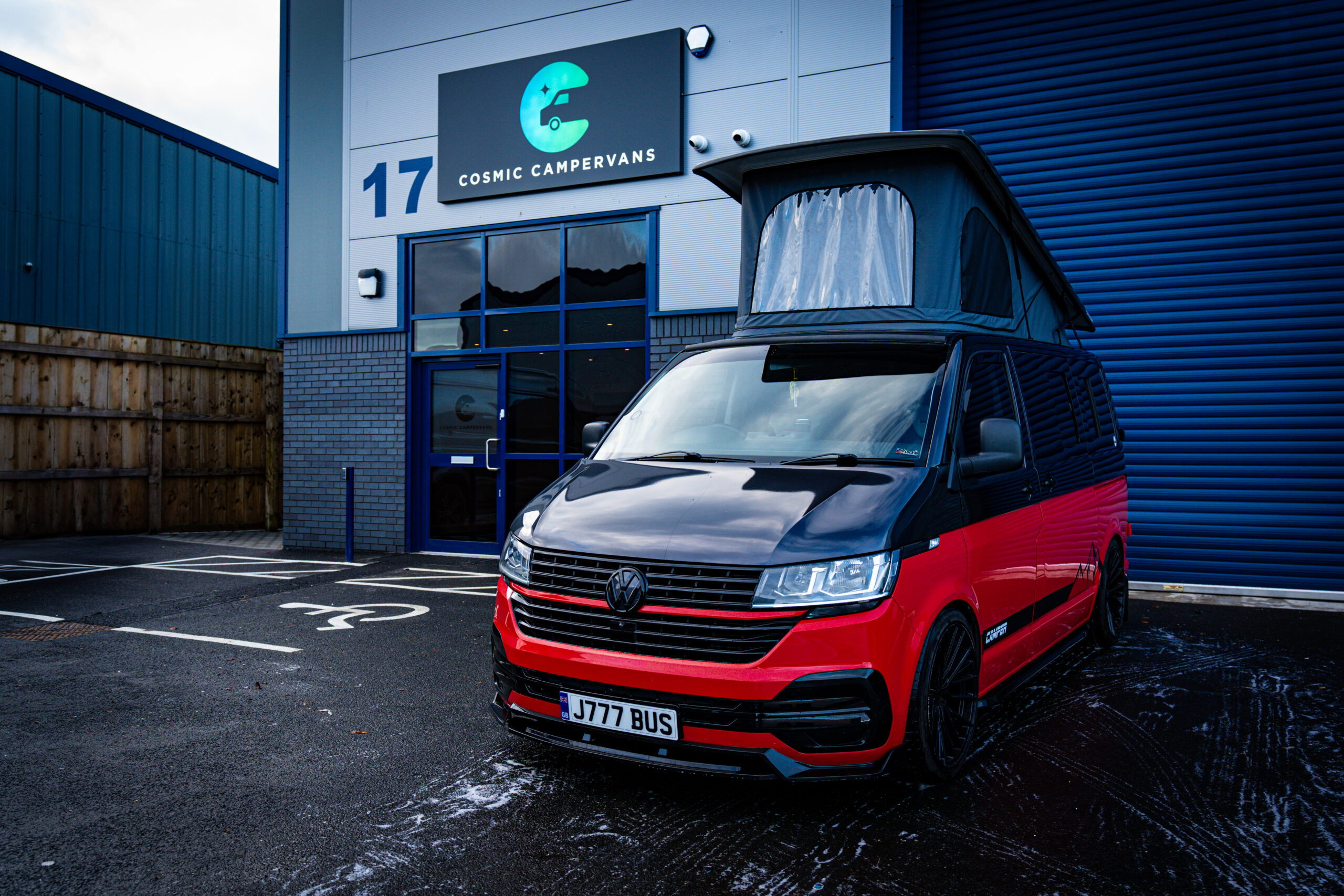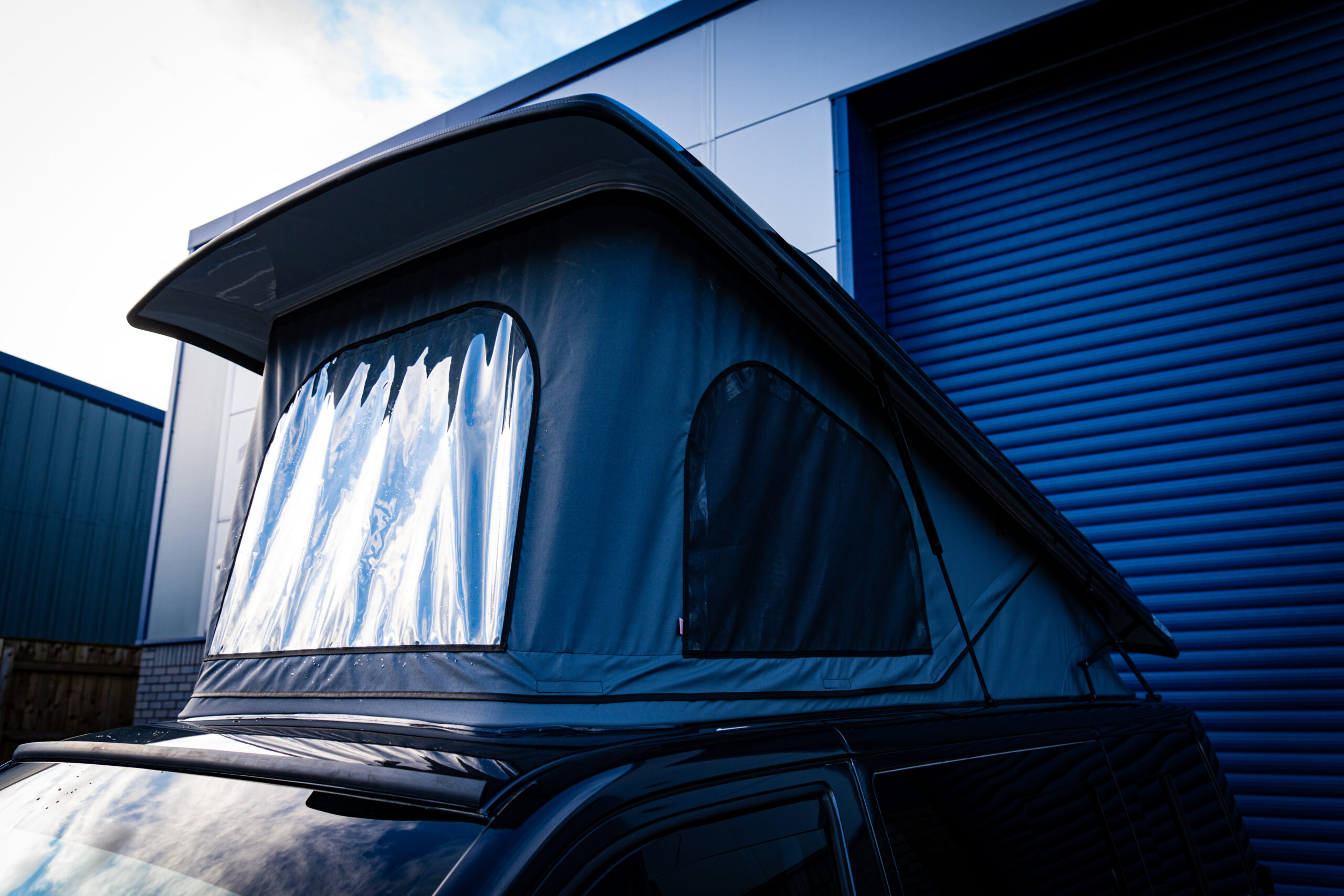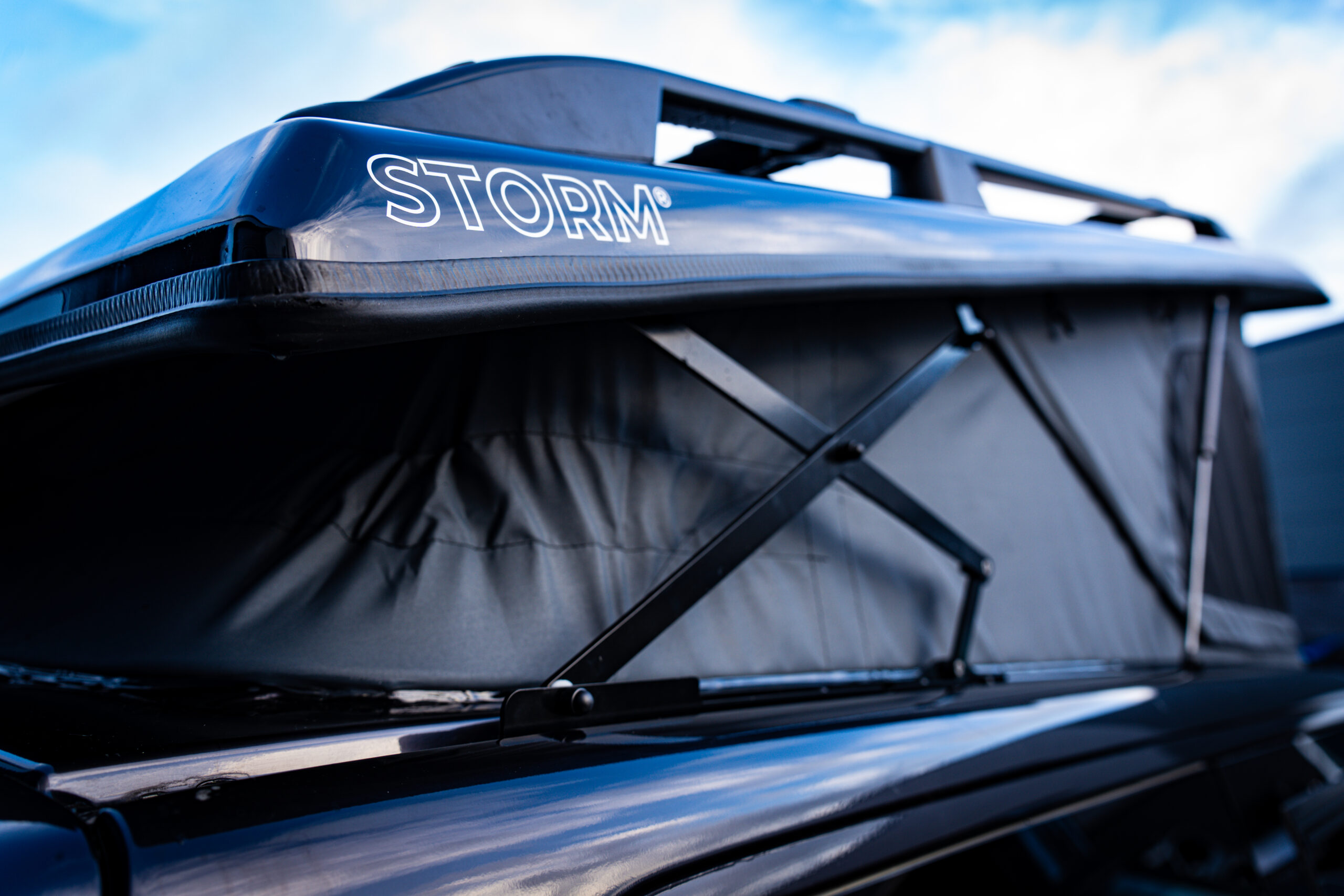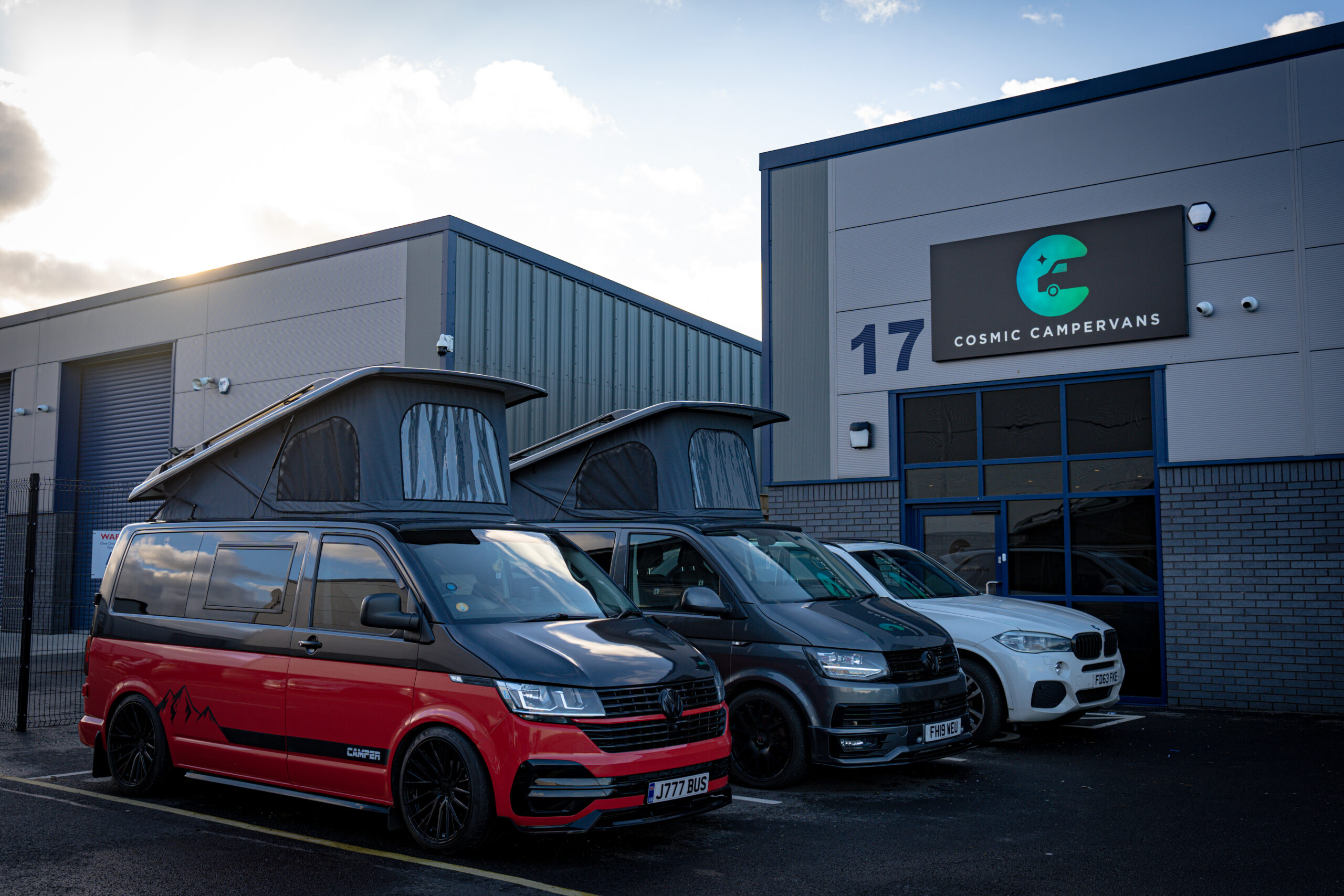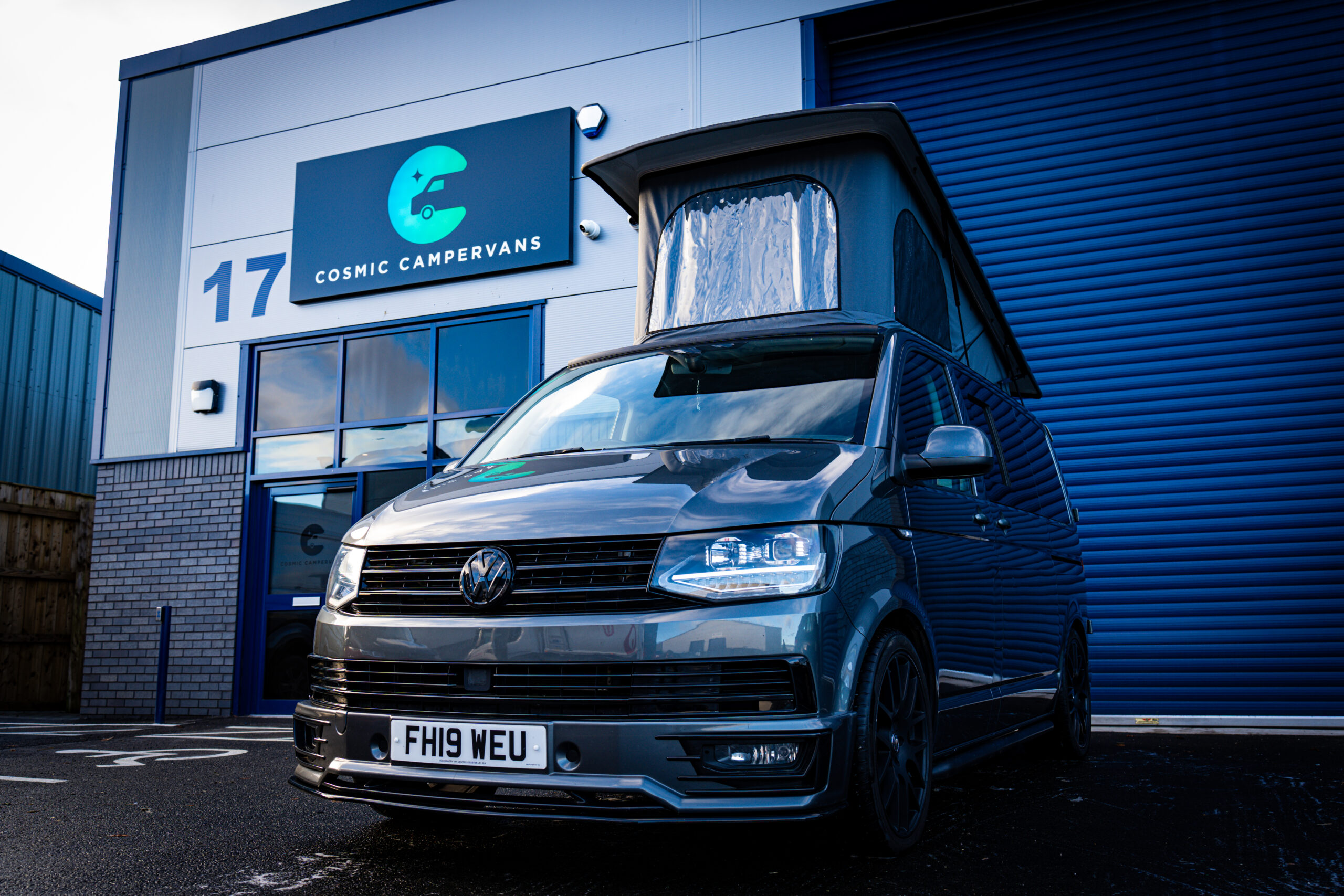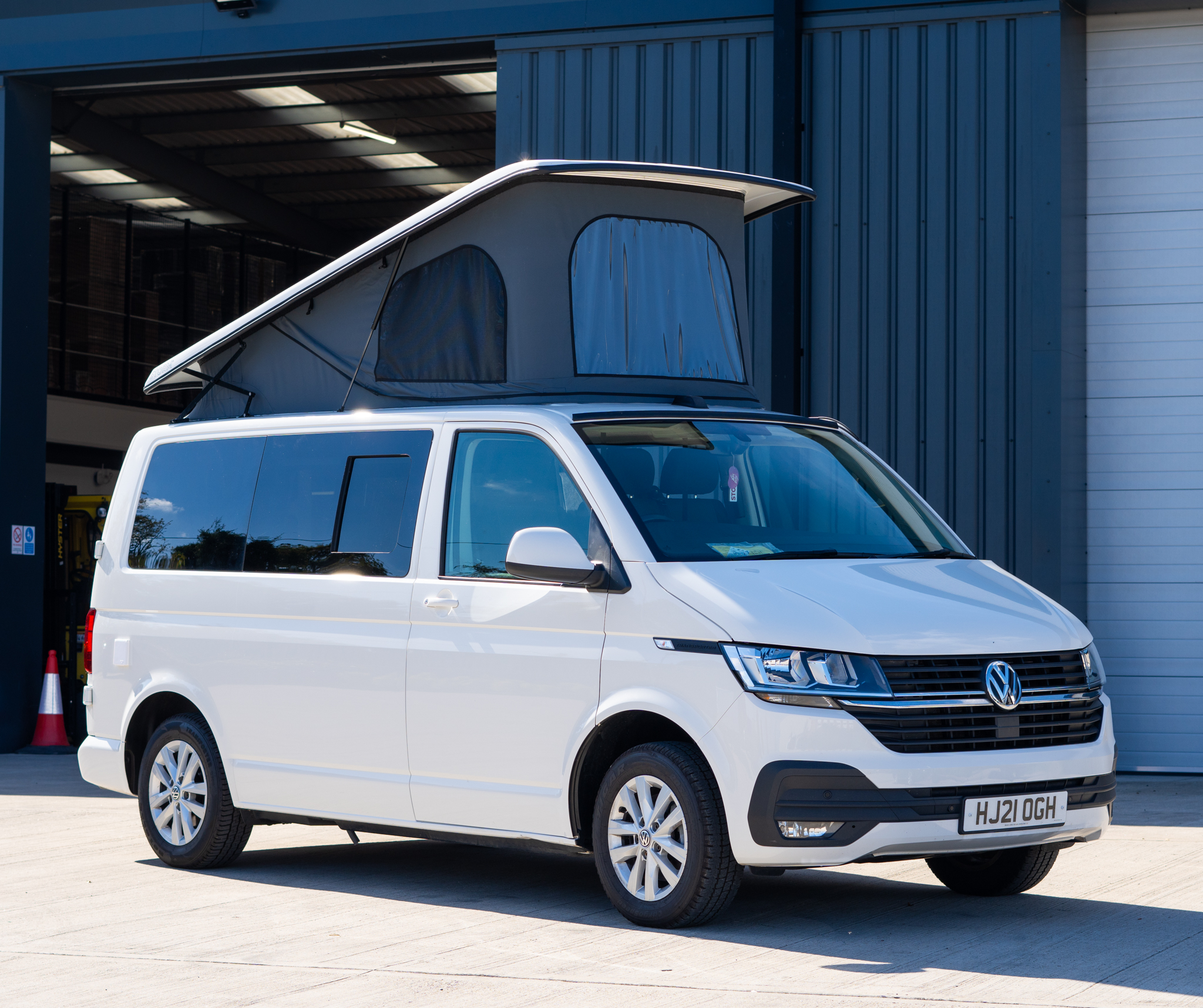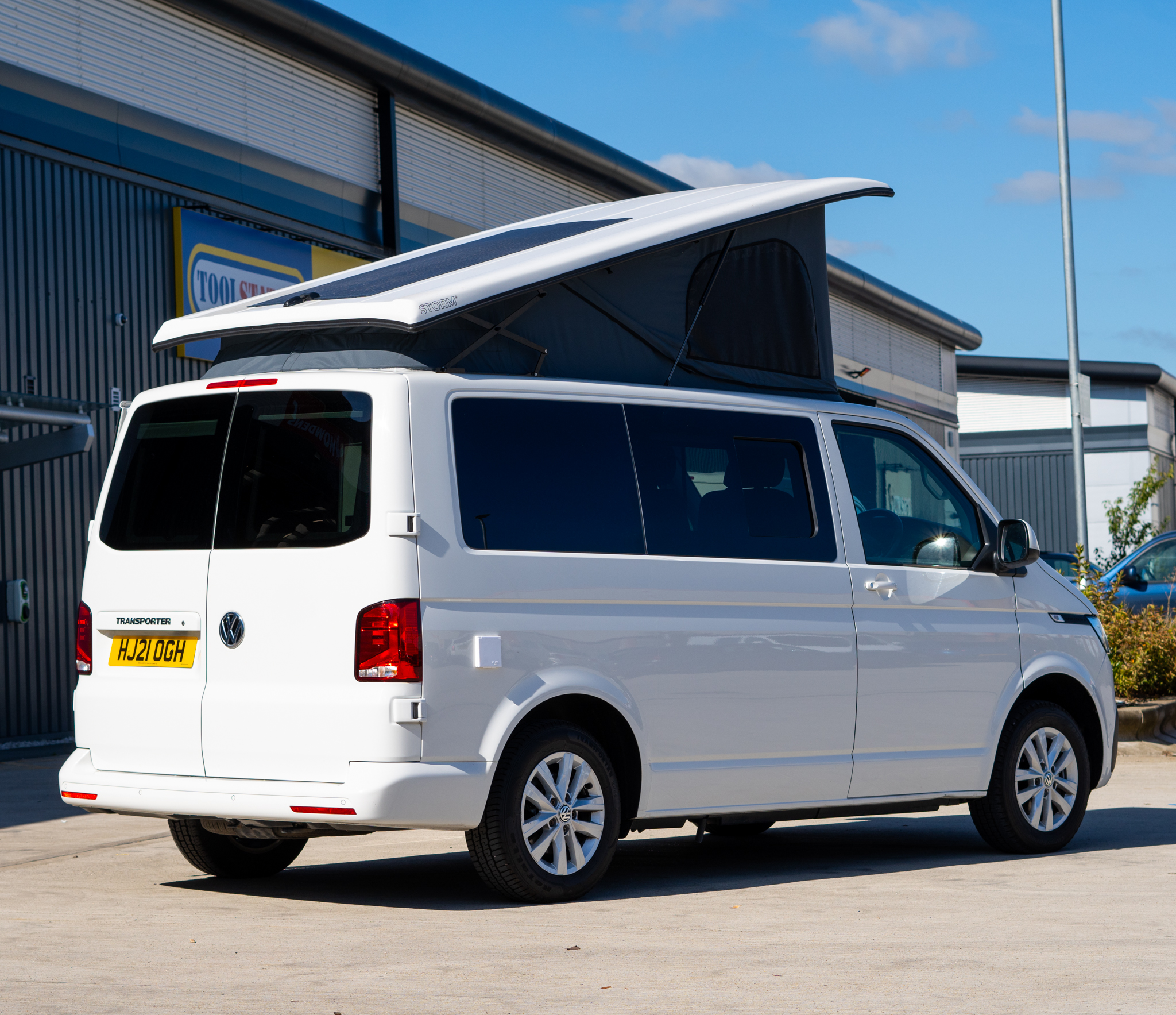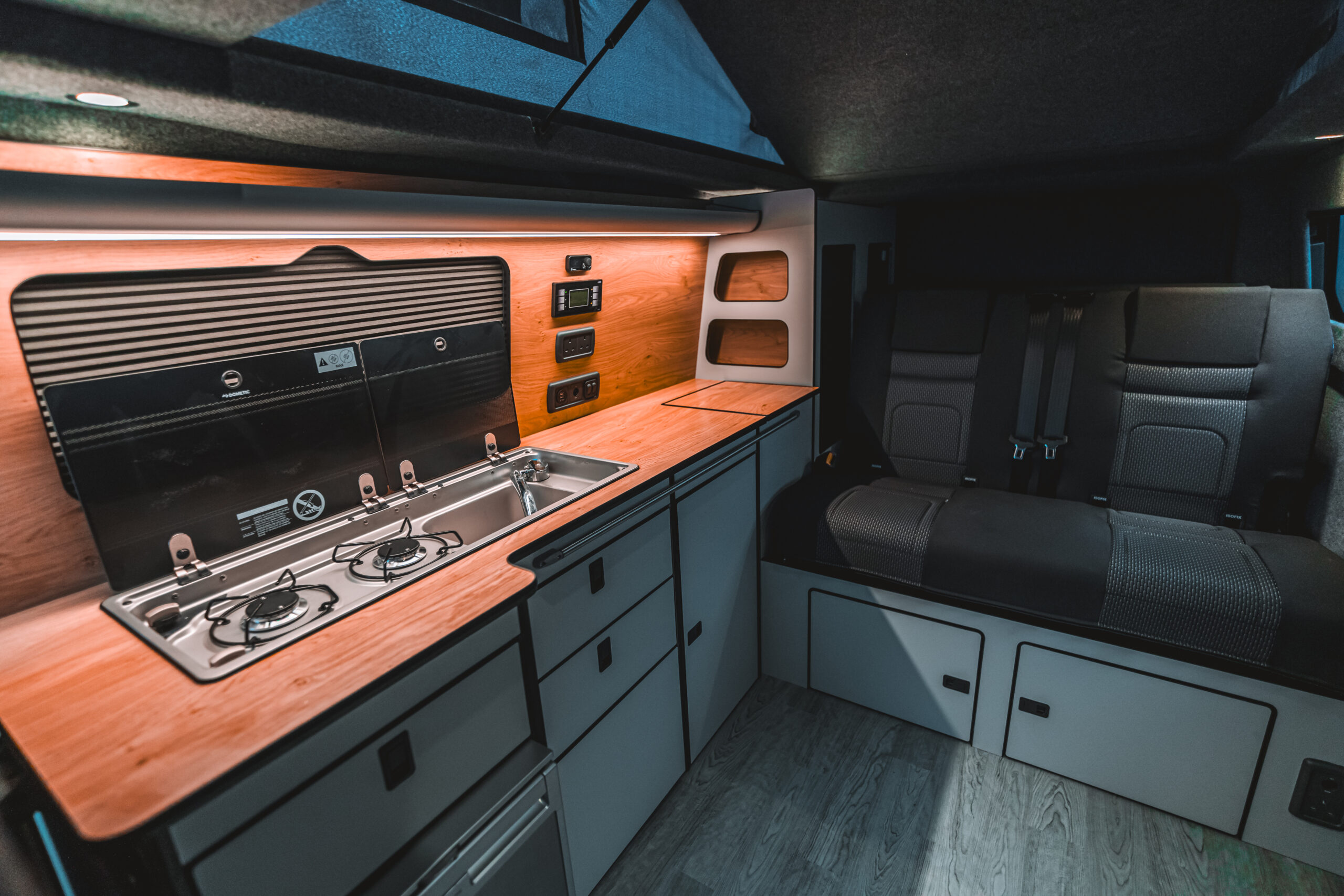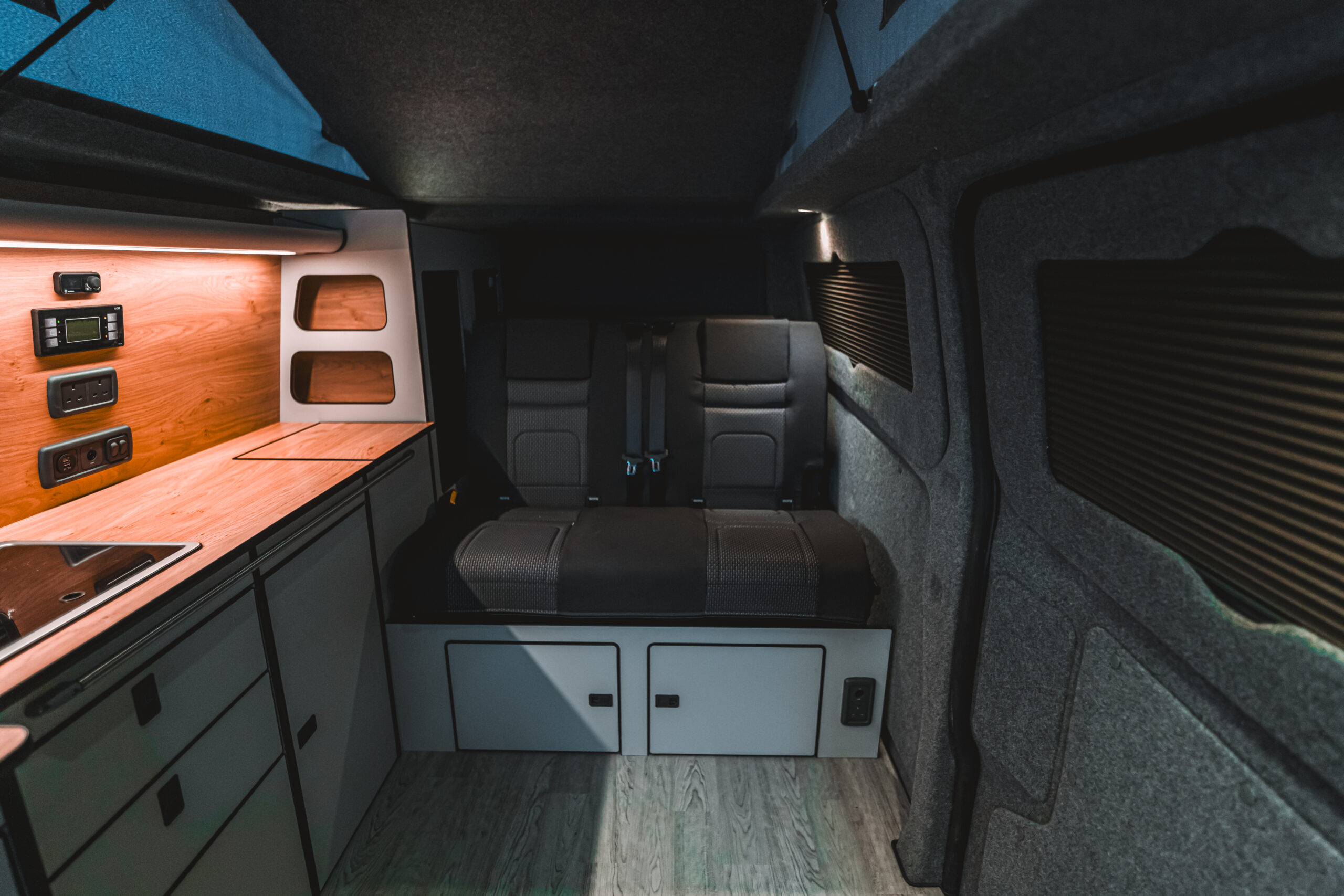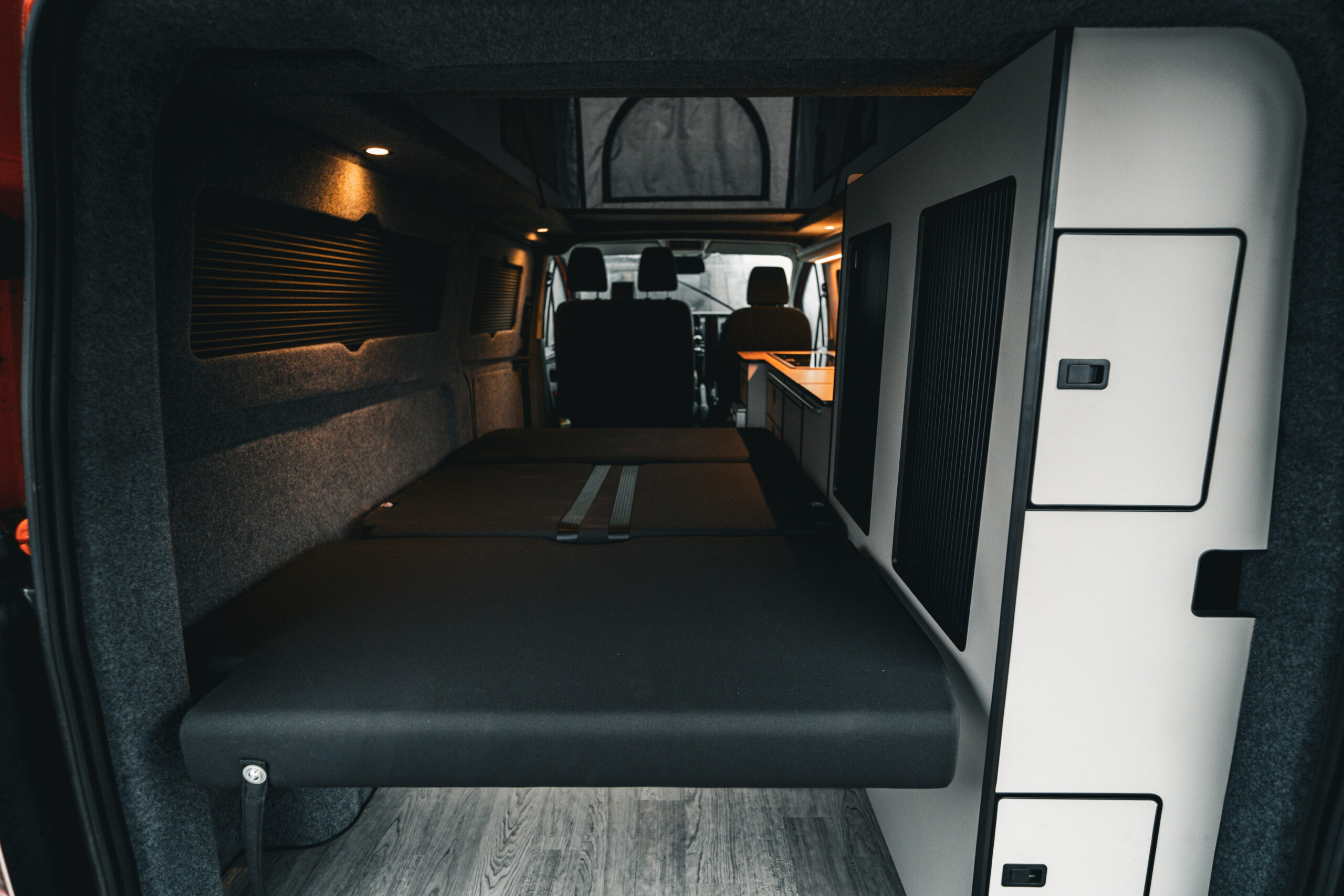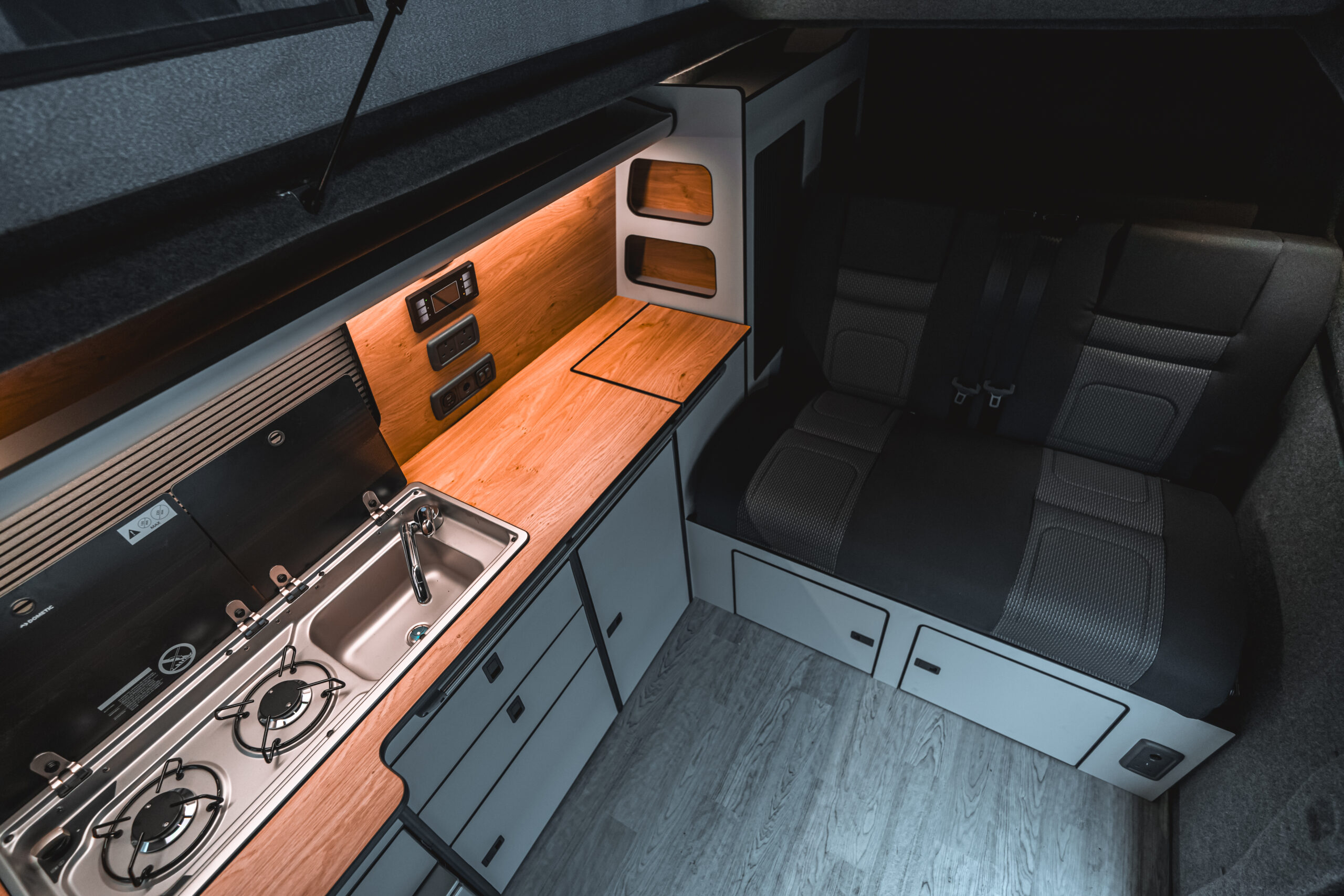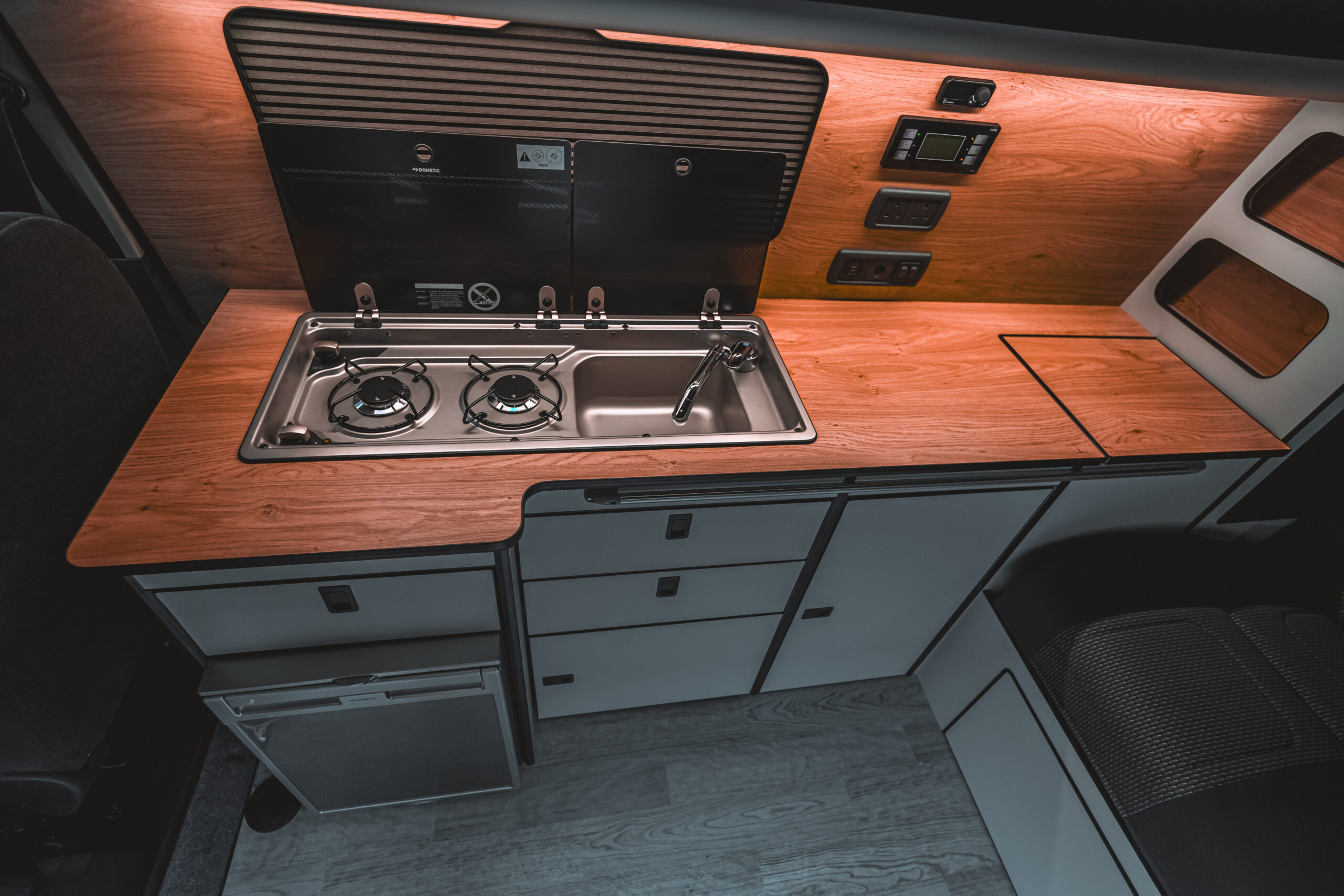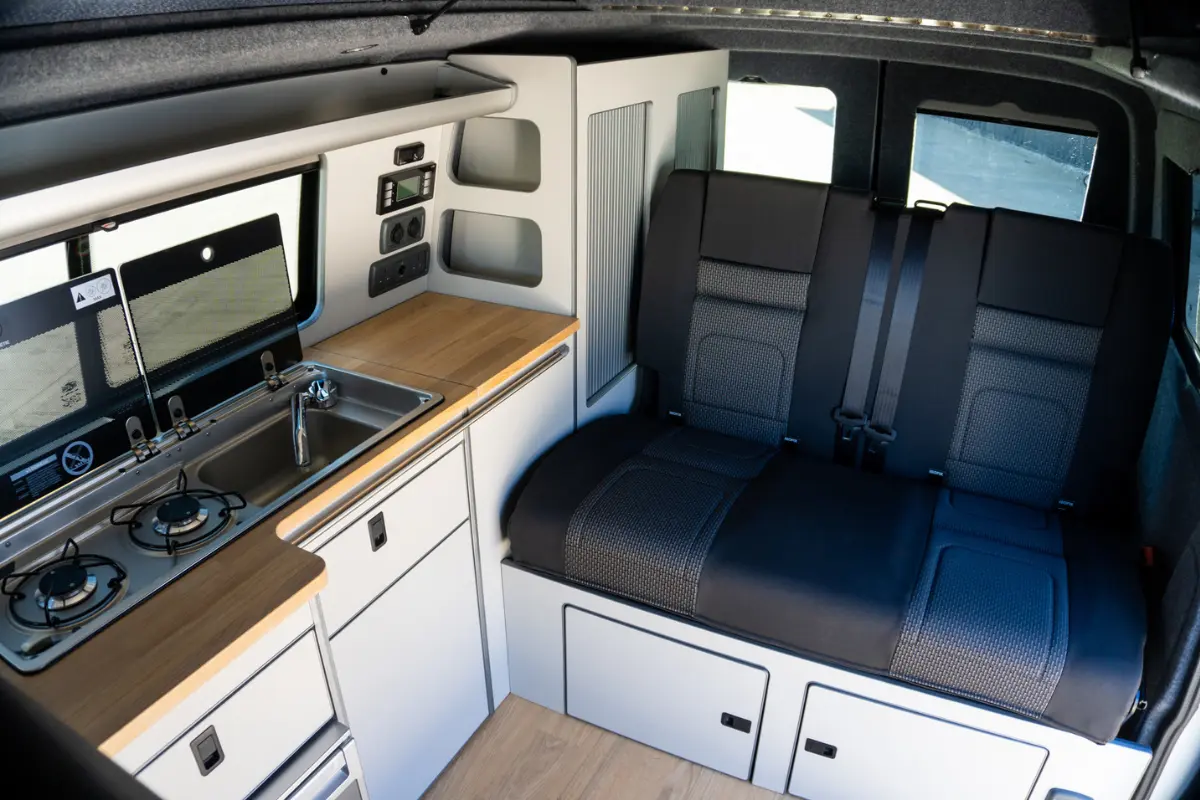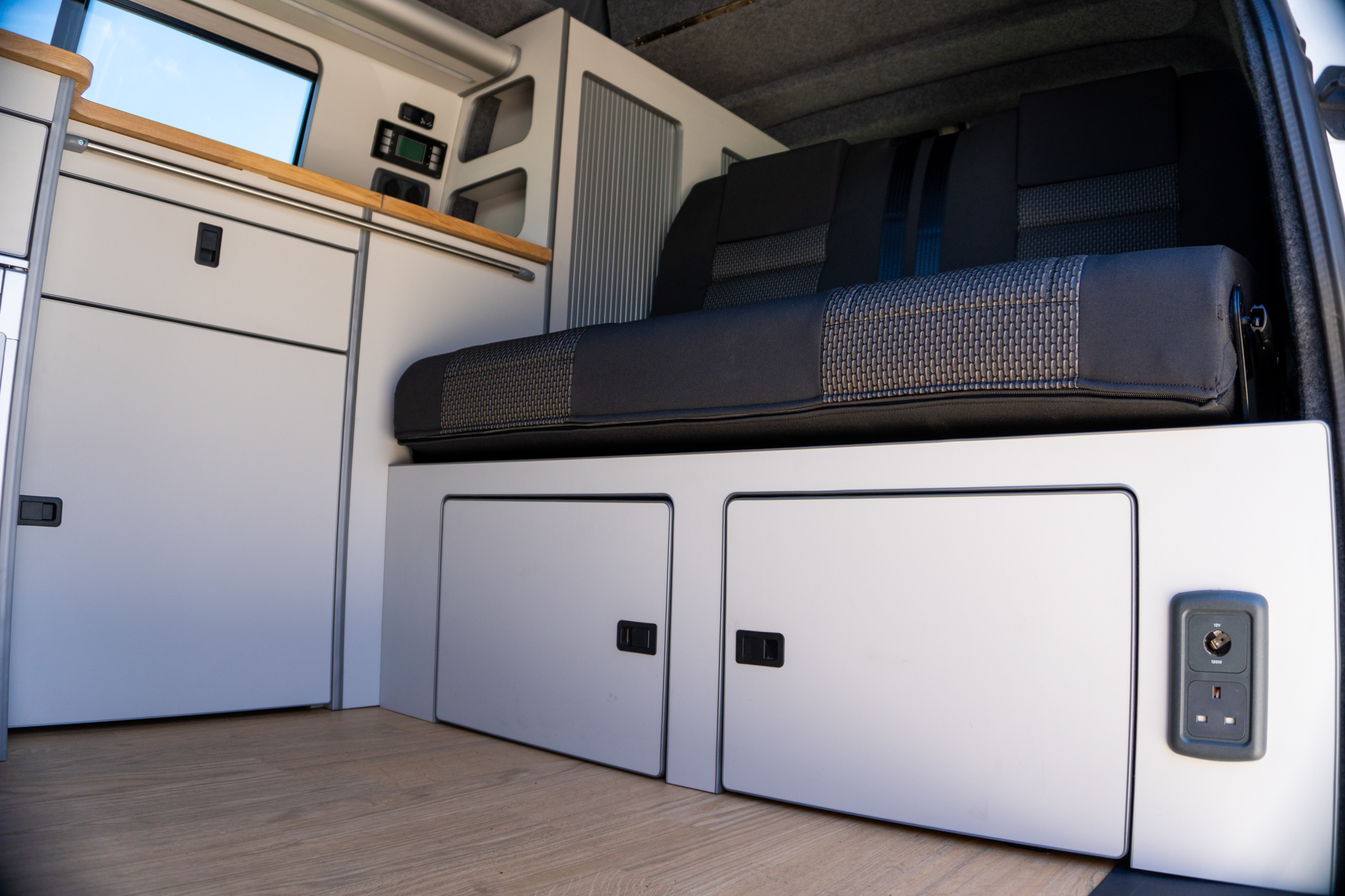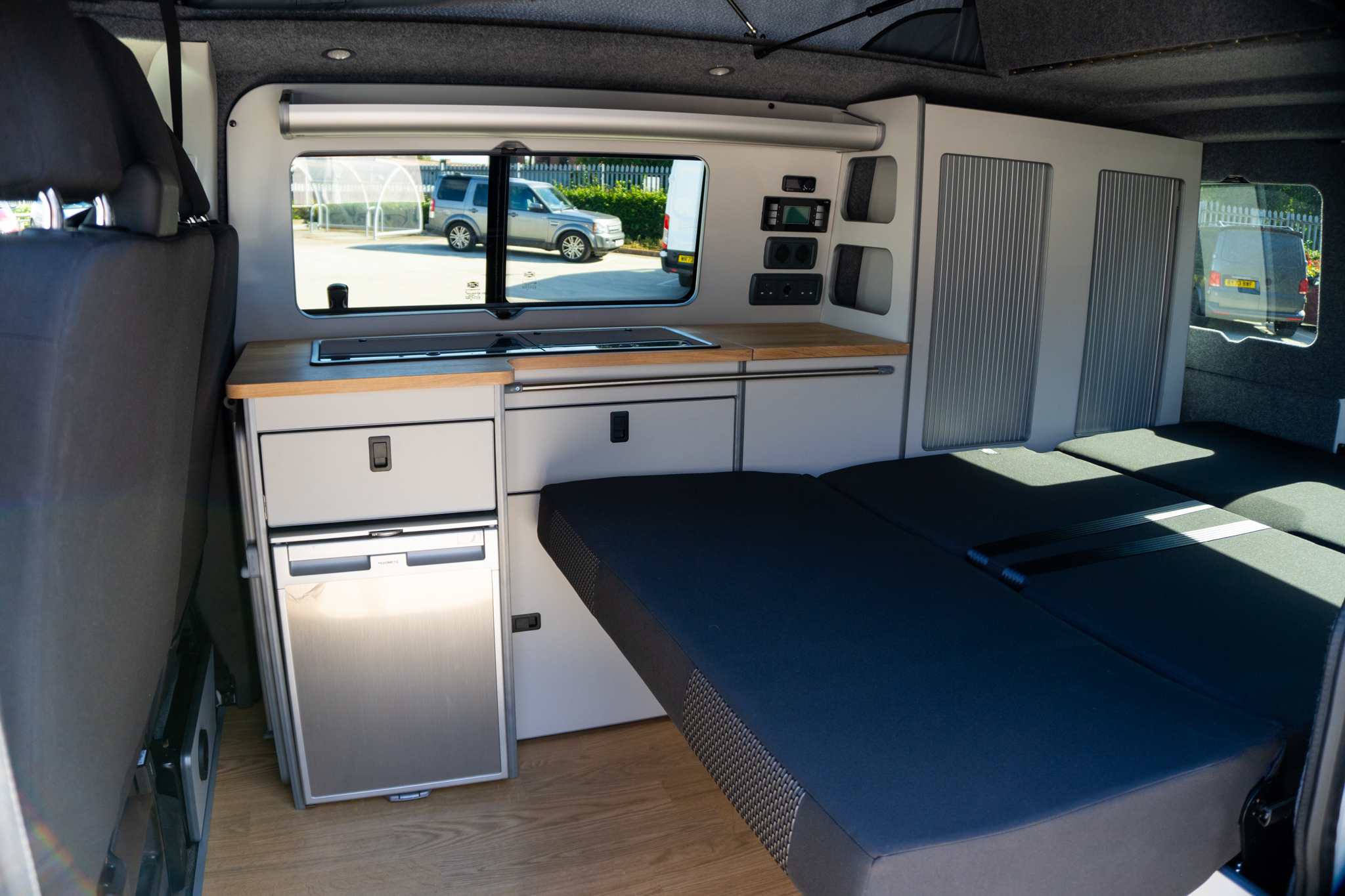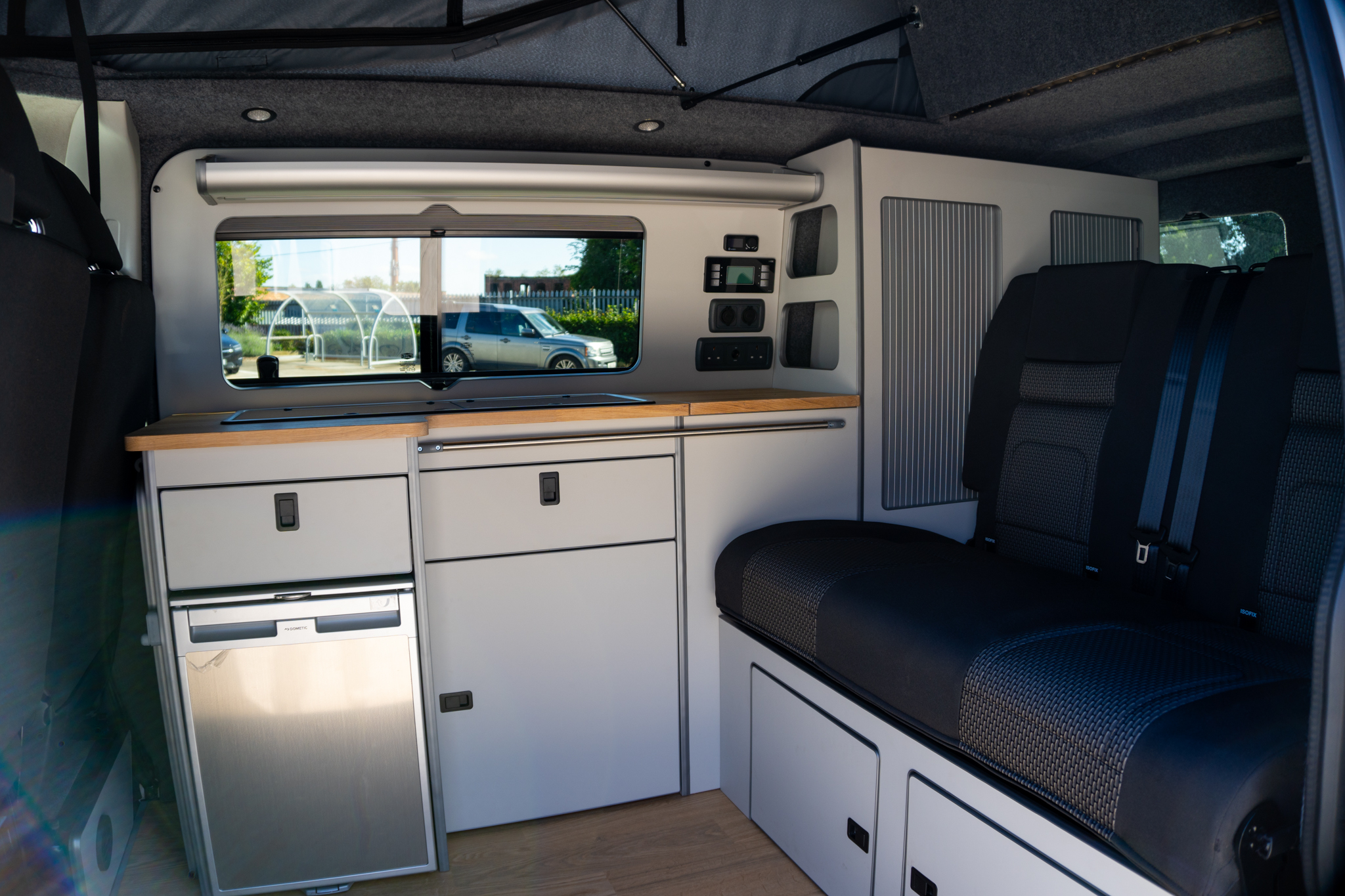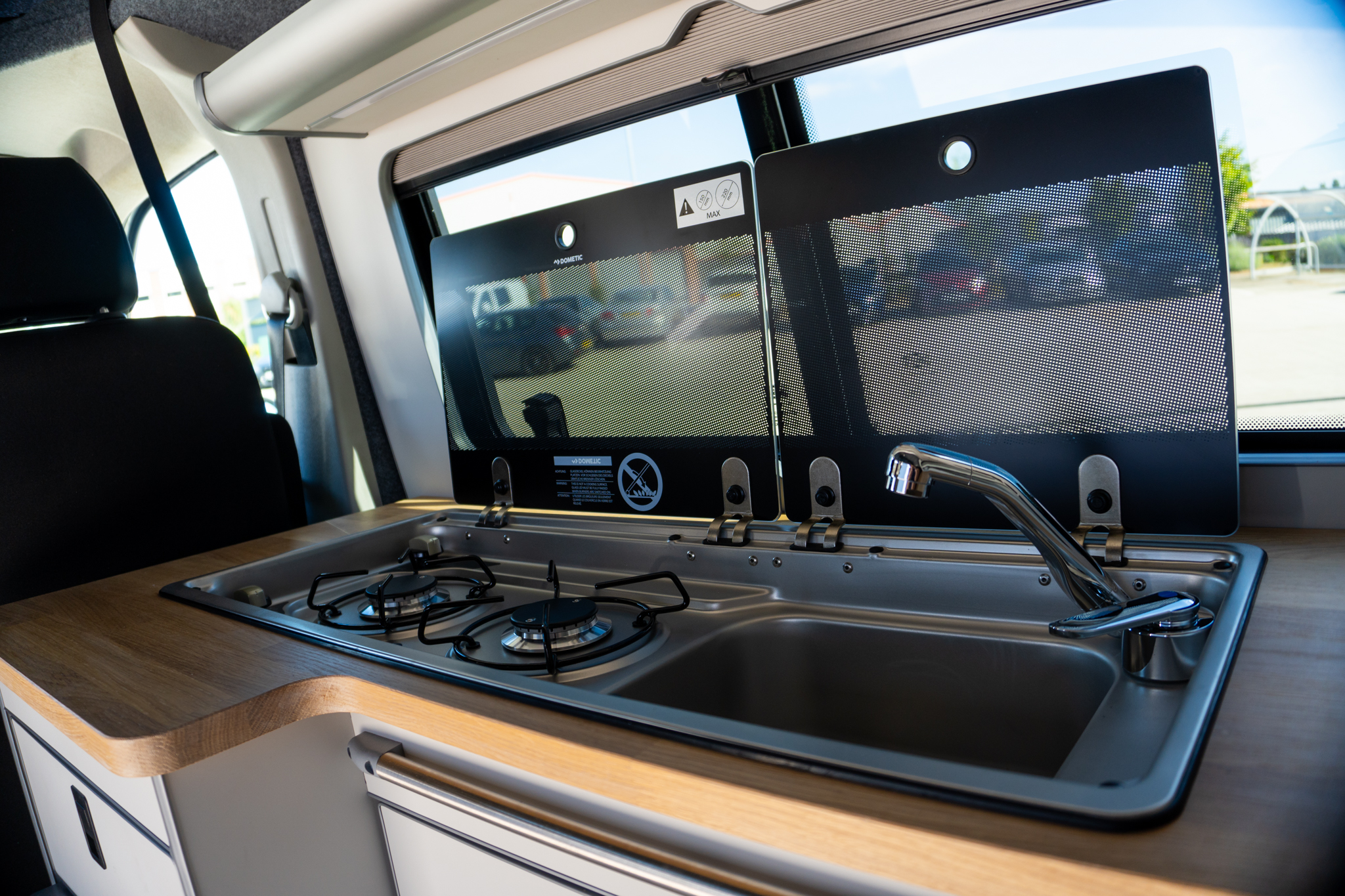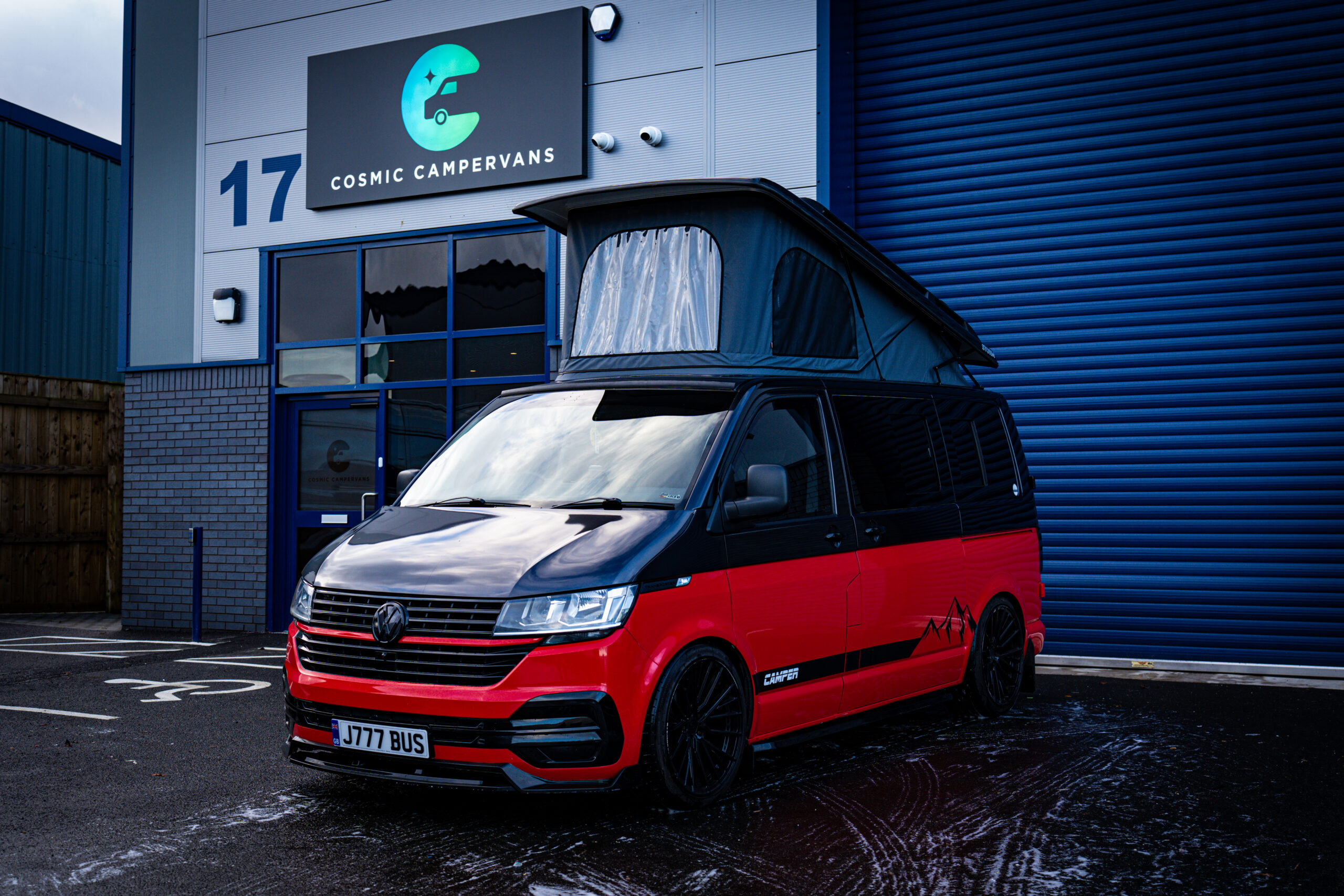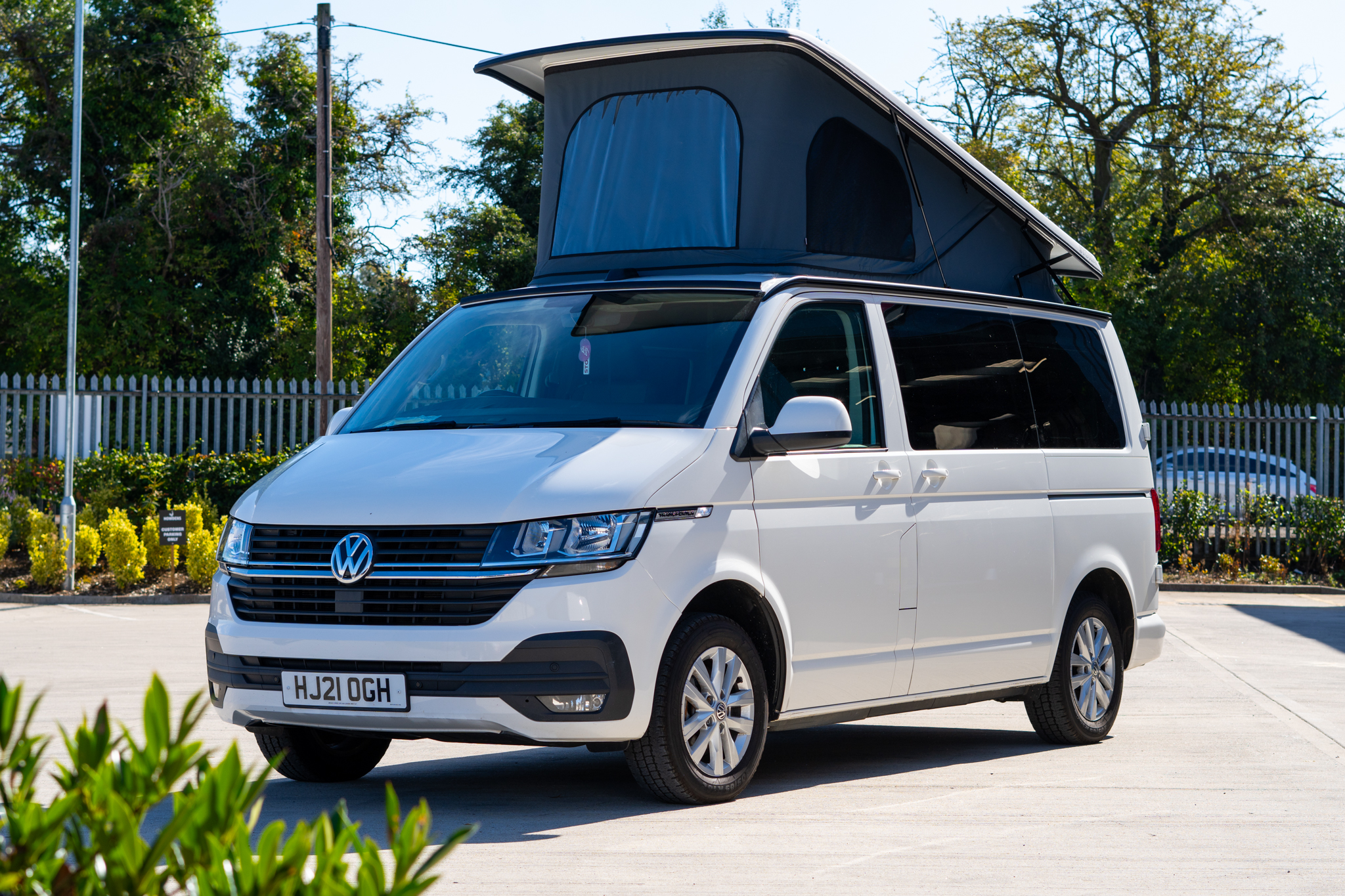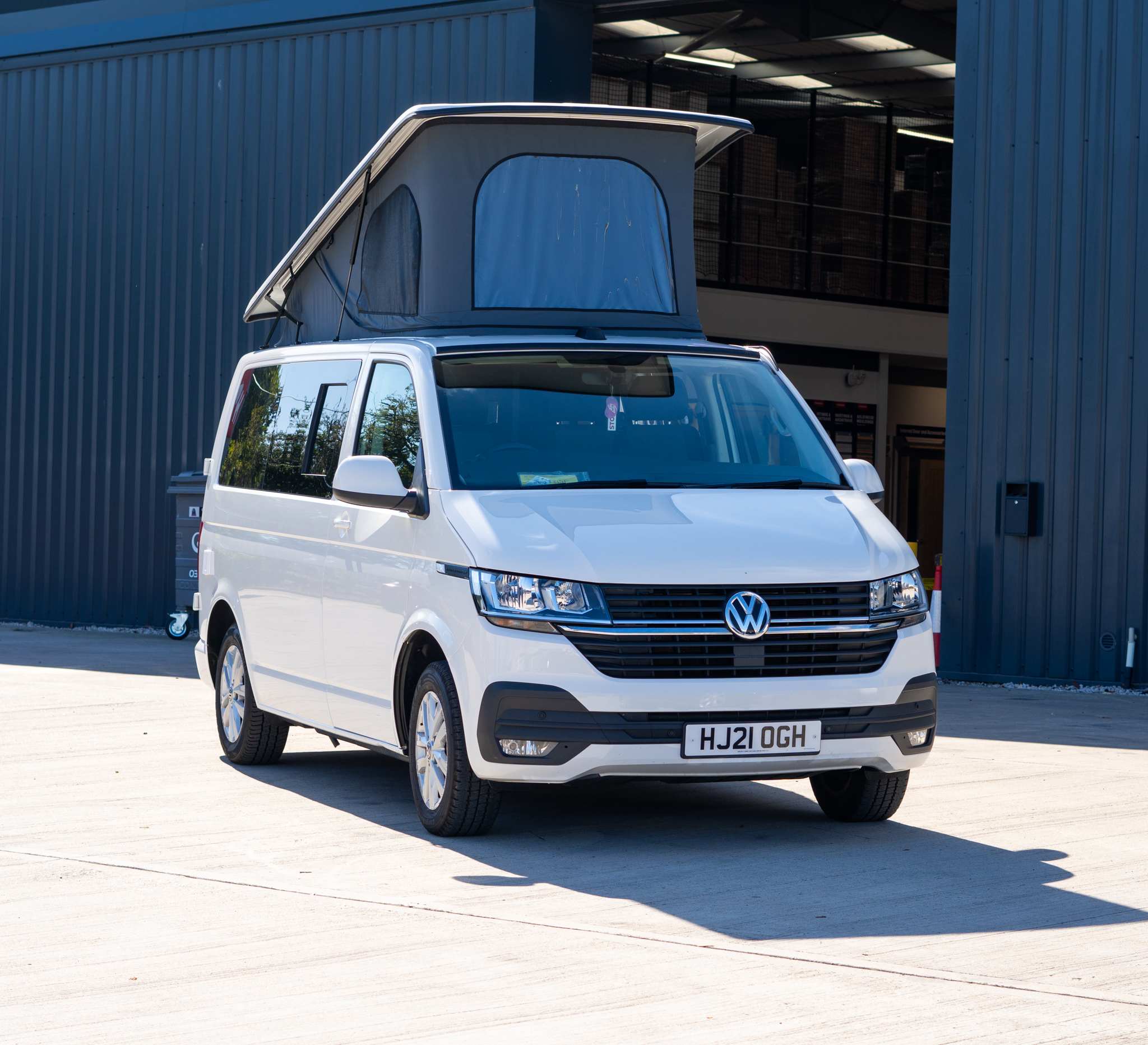Best VW Transporter Campervan Designs Layouts
Are you dreaming of transforming a VW Transporter into your perfect campervan? Whether you’re a weekend adventurer, a family road-tripper, or a full-time van lifer, the layout of your camper is absolutely the most important step in the conversion.
As a professional campervan converter, I have seen every variation of layout in these VW transporters, so let me save you some of the guess work. In this guide, we’ll dive into the best VW Transporter campervan layouts, comparing their pros and cons to help you find the perfect fit.
SWB vs LWB
Okay, so before I dive in I just wanted to discuss the difference between a short wheel base (SWB) and long wheel base (LWB) VW Transporter. There’s a few different advantages to each, but for this blog the most important thing to note is that with a LWB, you’ll actually get about 400mm of extra van length.
Now, every layout that I’ll discuss here is possible with a SWB van. However, it’s worth keeping in mind that the LWB will obviously have extra storage space and room in the van, so some layouts are much better suited to a LWB for that reason.
Transform Your VW into the Ultimate Camper
Save yourself the headache and let us do the heavy lifting! We’ve converted over 500+ VW Transporters.
Layout 1: Conventional VW Transporter Conversion Layout for 2-4 people
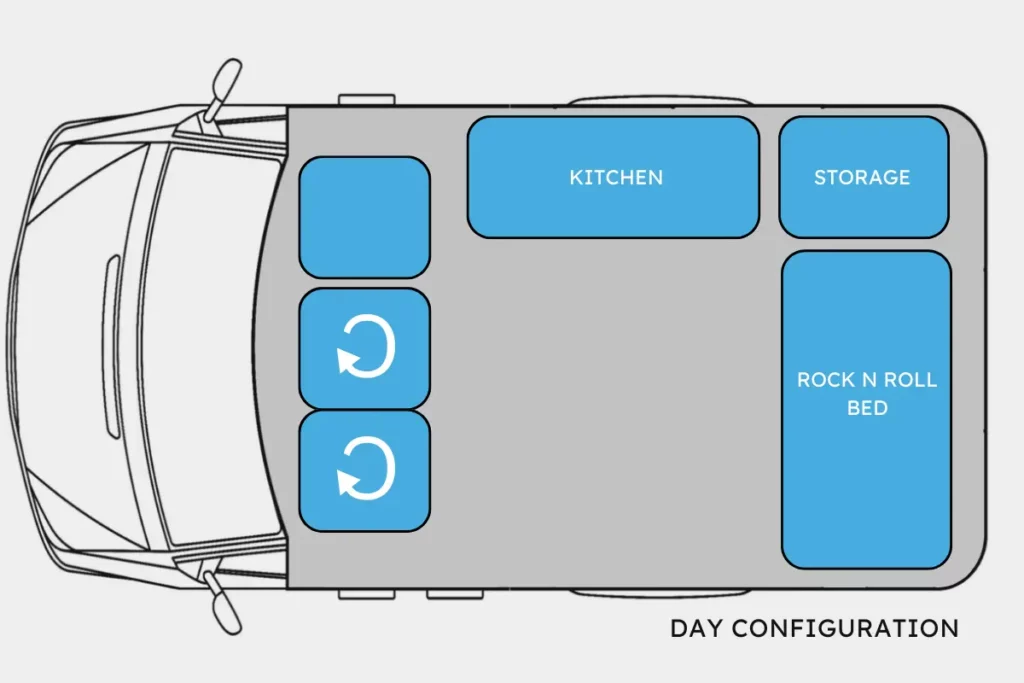

Okay, so I’ll start with the most conventional layout for a VW transporter campervan conversion. This is by far and away the most common conversion we do, and there is a good reason for it. This layout maximises the van space and is super ergonomic.
Basically, for this layout we have a Rock’n’Roll or Rib bed at the back with a kitchen unit on the far side of the van. The pop top roof is optional, but I’d highly recommend it. There is also the option to install a double swivel base on the front seat, so that the whole thing can turn around to face the back of the van for meal times and relaxing inside.
Conversions we completed in this layout
Below, I’ve linked my YouTube videos for two different conversions we completed in this layout. The first is with a short wheel base van and the second is in a long wheel base van. Hopefully, this will give you an idea of the kind of space you’re working with.
What is a pop top roof?
A pop-top roof can be raised to create extra headroom and usually an additional sleeping area. It’s like giving your van a cosy second floor that pops up when you need it and folds down flat for driving.
A pop top roof not only gives you extra sleeping space, but it also gives you a bunch more headroom, so you’ll actually be able to stand up in the van. In my opinion, the pop top roof is a really essential part of any decent campervan conversion. It just opens up the space and makes the van a lot more comfortable and user friendly.
For this particular layout with a rib bed and side kitchen unit, you don’t necessarily need a pop top, but in my experience cooking inside the van is kind of a nightmare without it.
I say this because without the extra windows in the pop top, there’s not much ventilation to keep the heat and smells out of the van. Not to mention you’ll be hunched over the whole time. So yeah, I think the pop top is well worth it in all van conversions, but especially those with interior kitchen units.
Upgrade Your Camper with a Pop-Top Roof
Transform your van into a multi-level living space. Pop-Top Roofs add a second sleeping area and more space.
What is the difference between a Rock’n’Roll Bed and a Rib Bed?

Ok, so both of these bed options are very similar. They both offer transport seats (with seatbelts) for day use, then convert to a bed for night use. The main difference between them is with a Rock’n’Roll Bed, you’ll have to move the frame to convert it to a bed, while the Rib bed goes horizontal by adjusting only the cushioning.
Not having to move the frame with the Rib bed has two main advantages. Firstly, the transition is a lot easier because you don’t have to worry about fiddling with the frame. This is an even bigger advantage if you have back issues. And secondly, not having a frame to fold out means that you gain a huge amount of storage space on the front and back.
Pros of this layout

Conventional
Choosing a conventional layout is great if you’re DIYing, because there will be many more instructional videos. If you get the conversion done by professionals like us, it will likely be cheaper and quicker compared to a completely customised layout.
Maximises the space
The reason this layout is so popular is because it maximises the space available inside the VW transporters. In both the day and night configurations, you don’t have any wasted space. And with our custom storage solutions, you’re able to make the most of every nook and cranny.
Want to Make Van Camping Easier?
Upgrade your VW Transporter with plumbing, carpeting and heating.
Four to five transport seats
Ok, so for small families or people that like to invite friends along for the adventure, this is the best layout you’ll find. You get the added two transport seats in the back but you don’t compromise on much space, because you would otherwise need to put some sort of bedding there anyway.
Cons of this layout
Poor rear seat location
In the layout, the Rib bed is located at the very back of the van. If you have kids or passengers that are prone to motion sickness, that’s probably going to be a problem. We all know that every bump, swerve and brake is felt much more at the back of the van, especially with a LWB.
Not very social for groups
This isn’t a big thing for some people, but I will say that the Rib bed set up isn’t the most comfortable for meal times or socialising. Without front swivel seats, you won’t have any options to sit facing one another and will only have room for two people in the cabin of the van.
And even with swivel seats, you’ll probably end up having to eat on separate fold out tables. That’s why I always recommend installing an awning with this layout. That way, when the weather is nice outside, you can enjoy the good weather and have a meal together in a more spacious setting outside. Isn’t enjoying the outdoors what van life is all about anyway?
Don't forget your awning rails!
Awning rails allow you to extend a shade right from the side of your van.
Layout 2: Best VW Transporter Conversion Layout for Families
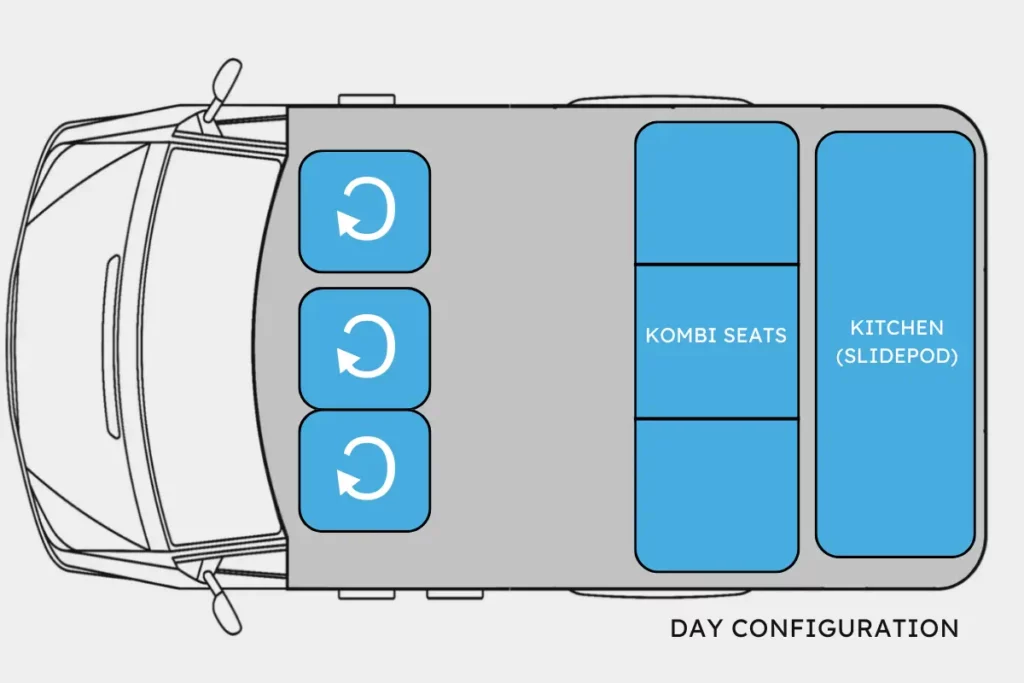
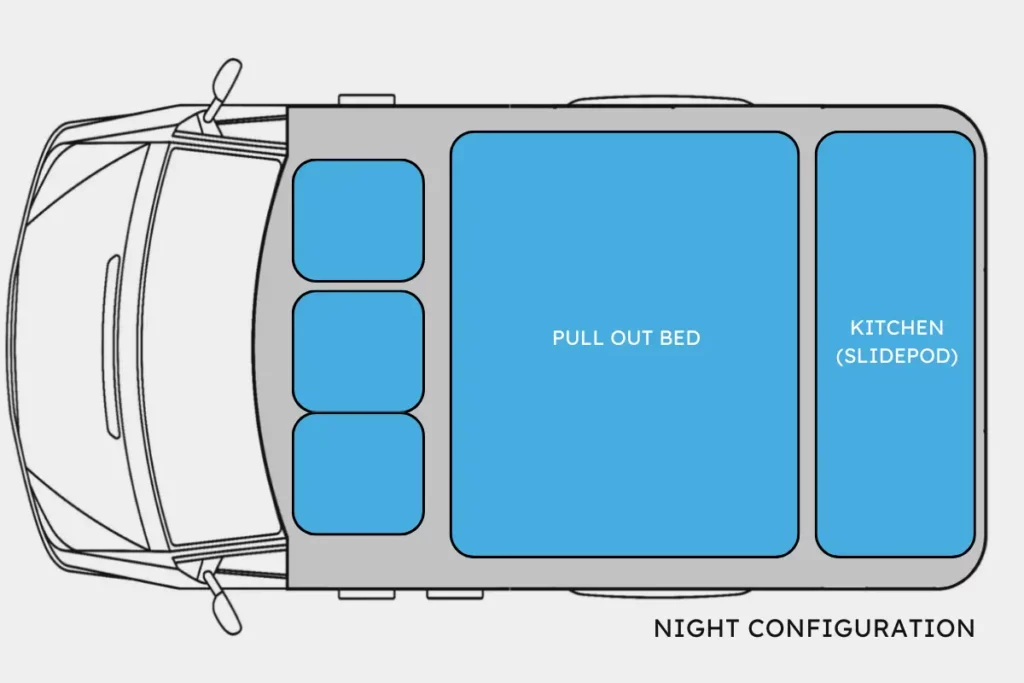
The next layout that I’ll suggest is perfect for travelling in a group of 5 or 6 people, which is why I like to think of it as the ultimate family design. Here, you have three Kombi seats in the cabin and a kitchen unit behind, accessible from the rear doors. To increase the transport seats to 6, opt for the double base swivel seat in the front.
In terms of sleeping arrangements, the Kombi seats fold down to accommodate a full sized bed below. For this layout, I really think you need a pop top roof, otherwise you’ll only be able to sleep two people which doesn’t make much sense when you’ve got so many seats.
On the other hand, I have had some clients that don’t mind not having everyone under one roof and actually prefer to pitch a tent next to the van. In that case, the pop top roof may not be necessary because you’ll be cooking outside anyway so the extra headroom isn’t as important as other layouts.
Just keep in mind that you’ll need to hire larger campsites to fit the tent, and it does require that extra hassle of set-up that a lot of van owners are trying to avoid.
Conversions we completed in this layout
Below, I’ve linked two videos for vans that we’ve converted with Kombi seats. The first one features a Slidepod as the kitchen/bedding unit at the back (more on that below). The second is much less luxurious but practical nonetheless, featuring a custom storage and sleeping set up.
What are Kombi Seats?

A Kombi seat is an additional rear seat installed in the back of your VW Transporter, so you can have six safe transport seats, all with seatbeltts. These seats are designed to be removable, so you can easily switch between carrying passengers or maximising cargo space.
For big families, you really can’t beat the convenience and versatility of a Kombi conversion.
What is a Slidepod?
Okay, so a slidepod is a kitchen and bed all in one. Sounds crazy, right?
Basically, it’s a kitchen unit that’s accessed from the rear and slides out of the van. As a kitchen, it provides bench space complete with a fridge, of the van complete with a sink and double burner.
You can also add a lot of optional extras, like a shower point, USB chargers, or a 12-volt cigarette light. It has plenty of storage space under the burners for all your groceries and cooking utensils, so it’s really user-friendly. On top of that, you’ve got an optional table that will affix to the front of the slide pod and LED lights for night cooking.
The slidepod also includes a fold out platform and mattress that will form the bed. It’s super comfortable and spacious.
So yeah, a Slidepod is a really versatile and handy accessory for this layout, but as you saw in the video above you can also achieve a really practical Kombi van without it. It just won’t feel as luxurious!
Slidepods without Kombi seats
As a side note, Slidepods are also fully functional without Kombi seats. So, a slidepod is actually a fantastic option on its own for a really simple campervan conversion.
All you’d need to do is install the Slidepod and you have a functioning camper suitable for short getaways. It doesn’t have a lot of the comforts of the other layout options (cooking inside the van, extra storage options, internal seating), but it does the job.
Of course, with just the Slidepod you’d only be able to transport and sleep two people, so families really need the Kombi seats add-on.
Kombi Conversions Made Easy
Convert your van into a 6-seater Kombi with our professional conversions.
Pros of this layout
Can be easily used as a normal van
Assuming you’ve opted for the Slidepod, a huge advantage of this layout is that everything in the cabin is removable. That means that when you’re moving house or bringing home bulky supplies for a DIY project, you can simply remove the Kombi seats and Slidepod.
Only layout option with six seats
The only way to have a campervan that can transport more than five people is to have the three Kombi seats in the back. So, if you have a larger family or like the kids to invite a few friends on your van trips, the Kombi seat layout will be the option for you.
Better rear seat location
I mentioned before that having the Rib bed right at the back of the van can cause motion sickness on long road trips. Unlike the Rib bed, a Kombi seat is fitted much further forward in the cabin, so you don’t have this issue.
Cons of this layout
You have to cook outside
Having the kitchen unit right at the back of the van means that you don’t have any option to cook inside the van.
Some people prefer to cook outside because you don’t get any mess and smells inside the van. However, when you’re living in the UK where the weather is often cold and rainy, it can be a bit unpleasant to have to cook outside.
Of course, if you’ve got a larger group to fit into thevan, cooking outside is a small price to pay for the added transport seats.
There’s limited access to storage inside the van
Having the kitchen unit at the back also means that you have limited access to any storage in that unit when inside the van.
This is especially true in the nighttime configuration. Unlike when you have your kitchen unit at the side of the van, once you put the bed down with this layout you’ll lose access to all storage between the seats and the kitchen, and you’ll also lose all that counter space too.
In my experience, losing access to storage in a nighttime configuration is slightly annoying, but it’s not a dealbreaker. You just have to be a bit more organised.
Layout 3: Best VW Transporter Conversion Layout for Socialising


This next option has just two-three transport seats, so this will only really be an option for couples. In this layout, the kitchen unit is also at the side of the van but instead of a Rock’n’Roll or Rib bed, we have a Futon style bed that acts as bench seating in the day configuration.
Sometimes you’ll see this referred to as a U-lounge layout. It’s also a fairly popular design and it’s a great alternative to the Rib bed if you don’t need the extra transport seats.
Again, due to the interior kitchen unit I recommend installing a pop top roof in this layout, but it’s totally up to you. A lot of people get by without it for shorter trips, so it’s all about your preference!
Pros of this layout
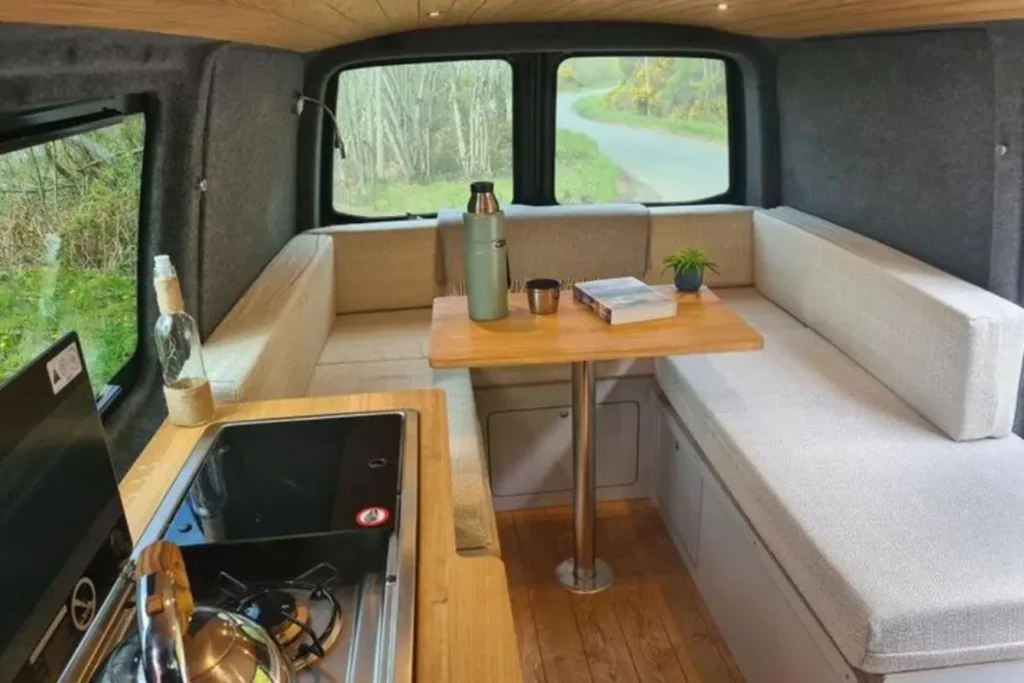
Very social and comfortable day configuration
For me, the biggest drawcard of this configuration is the bench seating and centre table. In terms of cosiness, it just doesn’t compare to the Rib bed layout.
In this layout, meal times will be a lot more social and comfortable. It’s also a lot more conducive to relaxing in the van – playing cards, chatting and sharing meals together. When you have a campervan in the UK, having a cosy interior is a real drawcard because the weather isn’t great all the time!
So, if the Rib bed layout seemed a bit awkward to you, this is a really great alternative.
You can have storage under the seats
Another thing I love about this design is that the seats can have storage under them. The rib bed gives you a lot of storage space, but unfortunately it’s not super accessible once you put the bed down. You don;t have this problem with the Futon layout.
Cheaper alternative to a Rib bed
Some customers are surprised by this because the Futon bed does seem like more customisation. But the reality is that both the Rib bed and Rock’n’Roll beds are very specialised designs that need extra testing so that they are safe enough to use while driving the vehicle. For this reason, they are quite costly.
The Futon design is really quite simple to build and will cost significantly less than any layout including a Rib bed or Rock’n’Roll bed.
Easy to re-decorate and clean
The last thing I’ll say about this design is that most cushion covers will be fairly easy to take off and on.
That means if you want to change the colour scheme of the van, it’s certainly much easier to change the cushion covers rather than a Rib bed. Also, if you have any issues with mildew or food smalls in the van, you can wash the covers much easier than you can clean the upholstery on a Rib bed.
Cons of this layout
There’s only two-three driving seats
This layout has just two transport seats (with seatbelts), or possibly three if you convert the passenger seat into a double. That’s why I recommend this layout for couples and not families.
But, it’s also good to keep in mind that even as a couple, there may come a day when you want to invite a few friends along for a day trip. That’s when a Rib bed in the back would really come in handy.
Your kitchen unit will be smaller
Okay, so unless you modify the design to have a very small bench seat on one side, you’re probably going to have to settle for a smaller kitchen unit. This is obviously more of a concern for SWB vans, which is why I recommend this layout for LWB vans more so than SWB.
You can’t use the van to carry long items
Because of the U-Shape of the seating unit, you won’t be able to use the van as a ‘normal’ van to carry bulky items. You’d actually have the same concern with a Rib bed, so if it’s really important to you that you have this option, both of these layouts are a no-go.
You could slightly modify the seating furniture so that the back of the ‘U’ flips up or even that the ‘U’ doesn’t join, so you have more of a gallery-style seating area. Or, of course, you could opt for the Kombi/Slidepod configuration which is completely removable.
Fit your Van with Rear Windows
Enjoy van life to the fullest with extra light and ventilation.
Key Takeaways
Choosing the right layout for your VW Transporter conversion is all about visualising your future van lifestyle. Would you rather the option to invite a few friends along or would you prefer a roomy interior? Would you prefer to cook indoors or are you willing to brave the weather and cook outdoors? It all depends on your priorities and lifestyle.
Don’t forget to consider options like a pop-top roof or slidepod to take your conversion to the next level. Ultimately, the best layout is the one that helps you enjoy the journey just as much as the destination. Now, it’s time to hit the road and start your adventure!
If you’d like some professional help for your full campervan conversion or just want to check out our packages, get in touch! And if you’re looking for some more guidance on your VW transporter campervan conversion, just check out our blog!




